

Zitierweise / cite as:
Payer, Alois <1944 - >: Chronik Thailands = กาลานุกรมสยามประเทศไทย. -- Chronik 1999 / B. E. 2542. -- 3. Juli bis Dezember. -- Fassung vom 2017-03-20. -- URL: http://www.payer.de/thailandchronik/chronik1999c.htm
Erstmals publiziert: 2012-10-25
Überarbeitungen: 2017-03-20 [Ergänzungen]; 2016-07-05 [Ergänzungen]; 2016-04-18 [Ergänzungen]; 2016-02-29 [Ergänzungen]; 2016-02-01 [Ergänzungen]; 2016-01-04 [Ergänzungen]; 2015-11-20 [Ergänzungen]; 2015-04-27 [Ergänzungen]; 2015-04-16 [Ergänzungen]; 2014-11-22 [Ergänzungen]; 2014-11-03 [Ergänzungen]; 2014-10-24 [Ergänzungen]; 2014-10-15 [Ergänzungen]; 2014-08-27 [Ergänzungen]; 2013-10-13 [Ergänzungen]; 2013-10-06 [Ergänzungen]; 2013-05-24 [Ergänzungen]; 2013-04-26 [Teilung des Jahrgangs]; 2013-04-21 [Ergänzungen]; 2013-04-14 [Ergänzungen]; 2013-03-30 [Ergänzungen]; 2013-03-19 [Ergänzungen]; 2013-02-09 [Ergänzungen]; 2013-02-04 [Ergänzungen]; 2013-01-26 [Ergänzungen]; 2013-01-13 [Ergänzungen]; 2012-11-12 [Ergänzungen]
©opyright: Dieser Text steht der Allgemeinheit zur Verfügung. Eine Verwertung in Publikationen, die über übliche Zitate hinausgeht, bedarf der ausdrücklichen Genehmigung des Herausgebers.
Dieser Text ist Teil der Abteilung
Thailand von
Tüpfli's Global Village Library
ช้างตายทั้งตัวเอาใบบัวปิดไม่มิด
|
Gewidmet meiner lieben Frau Margarete Payer die seit unserem ersten Besuch in Thailand 1974 mit mir die Liebe zu den und die Sorge um die Bewohner Thailands teilt. |
|
Bei thailändischen Statistiken muss man mit allen Fehlerquellen rechnen, die in folgendem Werk beschrieben sind:
Die Statistikdiagramme geben also meistens eher qualitative als korrekte quantitative Beziehungen wieder.
|
1999-07

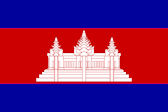
Prinzessin Sirindhorn (มหาจักรีสิรินธร, 1955 - ) besucht zusammen mit Kadetten der Chulachomklao Militärakademie (โรงเรียนนายร้อยพระจุลจอมเกล้า) Angkor (អង្គរ) in Kambodscha. Die Reise wird publizistisch genutzt, "to boost awareness about the need to preserve old ruins in Cambodia" (Sirindhorn).
Abb.: Lage von Angkor (អង្គរ)
[Bildquelle: CIA. -- Public domain]
Abb.: Angkor 1999
[Bildquelle: Simon Monk. -- http://www.flickr.com/photos/simonmonk/8688152641/. -- Zugriff am 2014-11-01. -- Creative Commons Lizenz (Namensnennung, keine kommerzielle Nutzung, keine Bearbeitung)]
1999-07
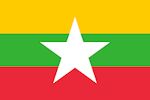
Großaktion von 800 Mann Polizei und Militär gegen Drogenhändler, Waffenschmuggler und Teakholzschmuggler an der Nordgrenze Thailands gegen Myanmar. Hauptziel sind 26 Chin Haw-Dörfer (จีนฮ่อ).
"Chin Haw or Chin Ho (Thai: จีนฮ่อ) are Chinese people who migrated to Thailand via Burma or Laos. Most of them were from Yunnan, the southern province of China." [Quelle: https://en.wikipedia.org/wiki/Chin_Haw. -- Zugriff am 2016-02-28]
1999-07-01

Öffnung des Grenzübergangs Mergui - Prachuap Khiri Khan (မြိတ်မြို့ - ประจวบคีรีขันธ์) für den Handel
Abb.: Lage des Grenzübergangs Mergui - Prachuap Khiri Khan (မြိတ်မြို့ - ประจวบคีรีขันธ์)
[Bildquelle: OpenStreetMap. -- Creative Commons Lizenz (Namensnennung, share alike)]
1999-07-12
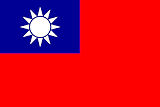
Lee Teng-Hui (李登輝, 1923 - ), Präsident der Republik China ( 中華民國 , Taiwan) gibt die Ein-China-Politik ( 一個中國政策) auf und schlägt eine Zweistaatenlösung für das Verhältnis beider chinesischer Staaten vor.
1999-07-12

Das US-Nachrichtenmagazin Newsweek behauptet, der einzige ökonomische Vorteil Thailands seien Sex und Golf.
1999-07-14

In Mae Sai (แม่สาย) werden über 1 Million Pillen Ya Ba [ยาบ้า] beschlagnahmt. Die die UWSA (United Wa State Army (佤邦联合军 / ဝပြည် သွေးစည်းညီညွတ်ရေး တပ်မတော်) hatte zuvor Privatleuten 5 Millionen Pillen im Austausch gegen 40 Four-Wheel-Drive-Fahrzeuge angeboten.
Abb.: Lage von Mae Sai (แม่สาย)
[Bildquelle: OpenStreetMap. -- Creative Commons Lizenz (Namensnennung, share alike)]
1999-07-14

Der Profigolfer Prayad Marksaeng (ประหยัด มากแสง, 1966 - ) nimmt als erster Thai am British Open Championship teil.
"Prayad Marksaeng (Thai: ประหยัด มากแสง, born 30 January 1966) is a Thai professional golfer. Prayad was a member of Thailand's winning golf team at the 1987 South East Asian Games and turned professional in 1991. He has been a member of the Asian Tour since it began in its modern form in 1995. He has won six events on the tour, becoming one of the first ten men to reach a million U.S. dollars in career earnings. He has also competed on the Japan Golf Tour and in 2008 won three tournaments in Japan.
Prayad represented Thailand at the 2007 and 2008 Omega Mission Hills World Cup and has been featured in the top 100 of the Official World Golf Rankings.
Prayad received a special invitation to play in the 2008 Masters Tournament. Marksaeng shot a 82 (+10) in the first round and withdrew midway through the second round due to a back injury."
[Quelle: http://en.wikipedia.org/wiki/Prayad_Marksaeng. -- Zugriff am 2011-12-24]
1999-07-16
Die Affen auf dem Khao Wang (= Phra Nakhon Khiri - อุทยานประวัติศาสตร์พระนครคีรี) bei Petchaburi (เพชรบุรี) werden zu einer solchen Landplage, dass man sie zu sterilisieren beginnt. Dies ist nicht einfach, da die klugen Tiere schnell lernen, den Betäubungsgeschoßen auszuweichen.
Abb.: Lage des Khao Wang
[Bildquelle: OpenStreetMap. -- Creative Commons Lizenz (Namensnennung, share alike)]
Abb.: Ihre Vorfahren entflohen der Sterilisation: Rhesusaffen (Macaca mulatta) auf Khao Wang (= Phra Nakhon Khiri - อุทยานประวัติศาสตร์พระนครคีรี), 2008
[Bildquelle: SvenZ / Wikimedia. -- GNU FDLicense]
1999-07-23
Premiere des Films Nang Nak (นางนาก) von Nonzee Nimibutr (นนทรีย์ นิมิบุตร, 1962 - )
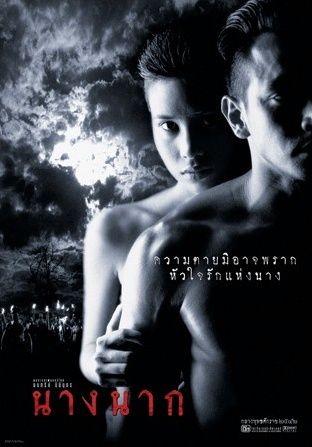
Abb.: Plakat
[Bildquelel: th.Wikipedia. -- Fair use]
|
"Nang Nak (Thai: นางนาก) is a romantic tragedy and horror film directed by Nonzee Nimibutr (นนทรีย์ นิมิบุตร, 1962 - ) in 1999 through Buddy Film and Video Production Co. in Thailand, based on a legend. It features the life of a devoted ghost wife and the unsuspecting husband. PlotIn a rural village west of Bangkok, Mak (มาก) (Winai Kraibutr - วินัย ไกรบุตร, 1970 - ) is conscripted and sent to fight in the Siamese-Vietnamese War (1831-1834). He has to leave behind his pregnant teenage wife, Nak (นาก) (Intira Jaroenpura - อินทิรา เจริญปุระ, 1980 - ). Mek is wounded and barely survives. He eventually returns home to his beloved wife and their child. A friend visits and sees Mek living with Nak. The villagers, knowing she had died months earlier, realize Mek is spellbound by her ghost. But those who attempt to tell him are killed by Nak's ghost in the night, desperate to stay with her husband. When Mek confronts Nak about the rumors, she lied and said the villagers disliked her after he left for the war. She claimed they are also telling lies about their son not being Mek's. Mek believes her and lashes out at anyone who tell him she is dead. One night, Mek finally discovers the truth. Having crawled under their house to retrieve an item, he tripped over something sticking up from the dirt. Curious, he digs it up and found a corpse and began to wonder why Nak was always preventing him from going down there. When he looked up through the creaks of the wood floor he saw Nak sitting and brushing her hair. She dropped the comb through a creak and her arm extended to retrieve it. Mek covered his mouth, so she wouldn't hear him scream and continued watching Nak. Nak picked up her crying baby and Mek saw that their son is also a corpse. It was revealed through a series of flashbacks that Nak had a difficult childbirth and both mother and child died from complications. Mek flees in terror to the local temple to hid. Nak follows him and attempts to win him back, but he is too frightened of her. The villagers attempted to drive out Nak, burning down her house and at last summoning an exorcist. Nak refuse to leave unless Mek returns to her. Mek pleas with her to leave to the netherworld. He loves her, but they can't be together since she is dead. He tells her that he is going to cut his hair and become a monk in order to pray for her sins and allow her spirit to find peace. She still refused. The kingdom's most respected Buddhist monk, (Somdej Toh - สมเด็จโต, 1788 - 1872) , arrives and in a tearful farewell Nak repents, leaving her husband for this life. Somdej Toh has the centre of her forehead cut out, thus releasing her spirit, and makes a girdle brooch of it. The epilogue states it later came into the possession of His Royal Highness Prince Chumbhorn Ketudomsak (พระองค์เจ้าอาภากรเกียรติวงศ์, 1880 - 1923). It was thereafter handed down for generations and its current owner unknown. BackgroundThe allegedly true story of Mae Nak Phra Khanong (แม่นากพระโขนง) is famous and a favorite among Thai people. A popular shrine dedicated to her at is in On Nut (อ่อนนุช), Sukhumvit Soi 77 (สุขุมวิท ซอย77) in Bangkok's Suan Luang (สวนหลวง - formerly Phra Khanong - พระโขนง) district. The old tale has been depicted on film many times since the silent era, one of the most famous being Mae Nak Pra Kanong (แม่นากพระโขนง) in 1958. Even after the 1999 version, British filmmaker Mark Duffeld directed a remake in 2005 called Ghost of Mae Nak (นาค รักแท้/วิญญาณ/ความตาย)). There also is an opera, Mae Nak, by Thai composer Somtow Sucharitkul (สมเถา สุจริตกุล, 1952 - ). Cast
[Quelle: http://en.wikipedia.org/wiki/Nang_Nak. -- Zugriff am 2013-03-19] |
1999-07-28

Im Exil in London stirbt Puey Ungpakorn (ป๋วย อึ๊งภากรณ์, geb. 1916).
Abb.: Lage von London (UK)
[Bildquelle: OpenStreetMap. -- Creative Commons Lizenz (Namensnennung, share alike)]
Abb.: Denkmal für Dr. Puey Ungphakorn (ป๋วย อึ๊งภากรณ์ = 黃培謙), 6 October 1976 Massacre Memorial at Thammasat University, Bangkok
[Bildquelle: Xiengyod / Wikipedia. -- GNU FDLicense]
"Puey Ungpakorn, MBE (Thai: ป๋วย อึ๊งภากรณ์, Chinese: 黃培謙,[1] March 9, 1916 - July 28, 1999) was an extremely successful bureaucrat who played a central role in the shaping of Thailand's economic development and in the strengthening of its system of higher education. Puey was the Governor of the (Central) Bank of Thailand for 12 years, a Dean of the Faculty of Economics, and also a rector of Thammasat University in Bangkok. Puey was a member of the Free Thai Movement (ขบวนการเสรีไทย) during World War II. He was a Magsaysay Award winner in the field of public service in 1965. Puey is the author of The Quality of Life of a South-East Asian: A Chronicle of Hope from Womb to Tomb or later known as From Womb to Tomb, which is still one of the most influential writings about social security in Thailand.
Early yearsPuey was born the fourth child of an immigrant Chinese fishmonger and a second generation Thai-Chinese mother, with ancestry from Raoping (饶平县).[2] In 1934 he was among the first group of students to enrol at the newly opened Thammasat University, which he graduated from in 1937. After having briefly worked as a translator Puey earned a government scholarship to study economics at the London School of Economics in 1938.
Following the outbreak of the Pacific War in December 1941, Puey joined the Free Thai Movement in Britain, and having undergone vigorous training with the Special Operations Executive, parachuted into northern Thailand in late 1944. He was captured almost immediately, and remained technically a prisoner of war until the Japanese surrender in September 1945, though he in fact made contact with Free Thai members of the Thai police and was able to work with them from his jail cell.
After the war, Puey was promoted to the rank of lieutenant colonel in the British forces and was awarded an MBE. He resumed his studies, and in 1949 received one of Thailand's first Ph.D.'s in Economics from the London School of Economics.
BOT governorWhen he became Governor of the Bank of Thailand, Puey quickly attracted the attention of international agencies, foreign governments, and the international financial community for the integrity of his financial planning and management. His international stature was recognised ceremoniously in 1964 when he became the first Thai to receive the Magsaysay Award for public service. Equally important, this international recognition gave him an influence with Field Marshals Sarit Thanarat, Thanom Kittikachorn, and their cohorts which far exceeded his bureaucratic position. They sought his aid and advice as a trouble-shooter for Thailand's monetary interests, particularly in matters they had botched or in which they were suspected to have their own private interests, such as remedying Sarit's mishandling of Thailand's participation in an International Tin Council and preventing a kickback scandal over the foreign printing of Thailand's currency.
Academic careerIn 1966 Puey became the dean of the Faculty of Economics at his alma mater, Thammasat University, where his work with the Rockefeller Foundation and with foreign scholars dramatically upgraded the training of Thailand's future technocrats. He also instituted a long-term research project on raising the productivity and economic level of Thai villagers. It was during this period that he was invited to serve as a visiting professor at both Cambridge and Princeton universities and was appointed to the governing boards of such organisations as the International Council for Educational Development, the East-West Centre, the Asian Institute of Management, and the International Food Policy Research Institute.
After the ousting of Thanom's regime in October 1973, Puey was catapulted into political prominence and, along with M.R. Kukrit Pramoj, was broadly promoted as one of the two major candidates for the post of prime minister in the elected government that would follow the palace-picked interim administration of Sanya Thammasak (สัญญา ธรรมศักดิ์). However, after a great deal of self-examination, Puey disavowed all interest in such a candidacy and returned to Thammasat, where he was appointed rector. Puey's explanation was that when he had joined the Free Thai Movement he had taken an oath never to seek or accept political appointment until after reaching the age of retirement. Some have argued, however, that Puey's withdrawal was based upon his mature understanding of the nature of society and that he had accurately foreseen that the upcoming democratic period would be inherently unstable, dangerous and short-lived.
ExileDespite his service, honesty and international reputation, Puey was branded a communist and "destroyer of unity" by the political right of Thailand. Although he spoke out against the unending student demonstrations of 1975-76 as being both ineffective and self-destructive, and even denied his students any use of the Thammasat campus as a base for mounting public demonstrations, he was nevertheless assigned blame for their occurrence.
On the evening of the bloody 6 October 1976 Massacre, Puey resigned from his position as rector of Thammasat in protest against the bloodbath that had occurred that day on the university campus. Realising he was a marked man, Puey went to Don Muang airport where he was met by a lynch mob. Only with the help of the Royal Thai Air Force police, who had been instructed by King Bhumibol's privy council office to help him leave, did he evade death and get on a plane bound for London.[3]
While living abroad, Puey met with Thais and influential figures in several countries, including those in the United Kingdom, the United States, France, Germany, Sweden, Denmark, Japan, and Australia to give facts on the incident and to call for a peaceful transition to democracy in Thailand. In 1977, Puey gave testimonials before the House Committee on Foreign Affairs investigating human rights in Thailand following the incident of 6 October 1976 Massacre.
In September 1977, Puey suffered a haemorrhagic stroke and had to stay in the hospital for three months. The illness left Puey with speech difficulties in which he could mumble only minimally. Puey lived a simple life in England to the end of his life. He could walk by himself. While he spoke only little, he could get his will communicated to the surrounding people. As a result of the stroke, he was not able to control his right hand."
[Quelle: http://en.wikipedia.org/wiki/Puey_Ungphakorn. -- Zugriff am 2011-11-10]
1999-07-30
Auf dem Dusit Campus des staatlichen Rajabhat Institute (มหาวิทยาลัยราชภัฏสวนดุสิต) dürfen männliche Transsexuelle (Kathoey - กะเทย) als Schulkleidung die Mädchenuniform tragen.
Abb.: Lage des Rajabhat Institute (มหาวิทยาลัยราชภัฏสวนดุสิต)
[Bildquelle: OpenStreetMap. -- Creative Commons Lizenz (Namensnennung, share alike)]
Abb.: So ähnlich dürfen Kathoey das Dusit Campus besuchen (die hier abgebildeten Personen sind keine Kathoey!!! und keine Studentinnen des Dusit Campus!)
[Bildquelle: Ian Fuller. -- http://www.flickr.com/photos/ianfuller/2662041811/. -- Zugriff am 2011-12-24. -- Creative Commons Lizenz (Namensnennung, keine kommerzielle Nutzung)]
1999-07-31
Der Gespenster-Film Film Nang Nak (นางนาก) des Filmemachers Nonzee Nimibutr (นนทรีย์ นิมิบุตร, 1962 - ) spielt 150 Mio. Baht ein.
Abb.: Plakat
[Bildquelle: Wikipedia. -- Fair use]
"Nang Nak (Thai: นางนาก) is a romantic tragedy and horror film directed by Nonzee Nimibutr (นนทรีย์ นิมิบุตร, 1962 - ) in 1999 through Buddy Film and Video Production Co. in Thailand, based on a legend. It features the life of a devoted ghost wife and the unsuspecting husband. Plot
In a rural village in Thailand, Mak (Winai Kraibutr - วินัย ไกรบุตร, 1970 - ) is sent to fight in a war and leaves his pregnant wife, Nak (Intira Jaroenpura - อินทิรา เจริญปุระ, 1980 - ). Mak is injured and barely survives. He returns home to his doting wife and child, or so he thinks. Mysterious events occur around the village.
A friend visits and sees Mak living together with Nak. The villagers, knowing that Nak died in childbirth several months previously, realize what is happening, that Mak is spellbound by Nak's ghost. People who attempt to tell Mak, or who know too much, are killed by the Nak's ghost, who becomes more aggressive due to her inability to accept her early death and her desperate desire to stay with her husband.
Toward the end, Mak discovers what is happening, and shocked, flees to the local temple. The villagers attempt several solutions, including burning down the house and in the end summon a ghost exorciser to destroy her forehead (this would destroy her soul as well as the ghost).
The country's most respected Buddhist monk (in the film Somdej Toh - สมเด็จโต) arrives in the final moments, takes charge and in a tearful farewell Nak repents, leaving her husband to live his life. Somdej Toh has the centre of her forehead cut out and made a girdle brooch. He wore it till his last day. The epilogue states that it later became in possession of His Royal Highness Prince Chumbhorn Ketudomsak (พระเจ้าบรมวงศ์เธอ พระองค์เจ้าอาภากรเกียรติวงศ์ กรมหลวงชุมพรเขตอุดมศักดิ์). Then, handed down to many others, nondetected. Until now nobody knows where the item is.
BackgroundThe story of Mae Nak Phra Khanong (แม่นาคพระโขนง) is famous and a favorite among Thai people. There is a shrine dedicated to her at On Nut, Sukhumvit Soi 77 (สุขุมวิท ซอย 77) in Bangkok's Suan Luang (สวนหลวง) (formerly Phra Khanong - พระโขนง) district.
The tale has been depicted on film numerous times since the silent era, with one of the most famous being Mae Nak Pra Kanong in 1958. Even after this 1999 version, British filmmaker Mark Duffeld directed a remake in 2005 called Ghost of Mae Nak (นาค รักแท้/วิญญาณ/ความตาย). There also is an opera, Mae Nak, by Thai composer Somtow Sucharitkul (สมเถา สุจริตกุล, 1952 - ).
Cast
- Intira Jaroenpura (อินทิรา เจริญปุระ, 1980 - ) as Nak
- Winai Kraibutr (วินัย ไกรบุตร, 1970 - ) as Mak"
[Quelle: http://en.wikipedia.org/wiki/Nang_Nak. -- ZUgriff am 2011-12-24]
1999-08
Bangkok Post: während er Wirtschaftskrise haben 800 bis 1000 Hüttenbesitzer in Khlong Toei (คลองเตย) ihr Heim verloren wegen Schulden und horrender Kreditzinsen. 250 bis 300 Kinder aus dem Slum Khlong Toei wurden zur Schuldbegleichung an Verbrechersyndikate abgegeben. Diese Kinder müssen Drogen an Kunden von Drogenbossen liefern als Zinszahlung für Spielschulden ihrer Väter.
Abb.: Lage von Khlong Toei (คลองเตย)
[Bildquelle: OpenStreetMap. -- Creative Commons Lizenz (Namensnennung, share alike)]
1999-08
Guinness Buch der Rekorde: Meiste Tierärzte bei einer Operation. Über 30 Tierärzte operieren im Elephant Hospital Lampang Elefantenkuh Motola, die an der Grenze zwischen Thailand und Myanmar auf eine Mine getreten war und einen Fuß verloren hatte. Die Operation kostet 64.600 Pfund und wird über Spenden finanziert. Später bekommt Motola eine Prothese.
1999-08-02
Tod von Gen Sunthorn Kongsompong (พลเอก สุนทร คงสมพงษ์, geb. 1931).
Abb.: Gen Sunthorn Kongsompong (พลเอก สุนทร คงสมพงษ์)
[Bildquelle: th.Wikipedia. -- Fair use]
"Sunthorn Kongsompong (Thai: สุนทร คงสมพงษ์; * 1. August 1931; † 2. August 1999) war ein thailändischer General. Biografie
Sunthorn war Schüler der Suan-Kulab-Wittayalai-Schule (โรงเรียนสวนกุหลาบวิทยาลัย), einer bekannten Jungenschule aus der eine Reihe von Premierministern und Militärpersonen hervorging. Nach Beendigung der Schulausbildung trat er in den Militärdienst ein und war Absolvent der Chulachomklao Royal Military Academy (โรงเรียนนายร้อยพระจุลจอมเกล้า). Im Laufe seiner militärischen Laufbahn stieg er zum General (พลเอก) auf.
Am 1. April 1990 wurde er Commander of the Royal Thai Armed Forces Headquarters (กองบัญชาการกองทัพไทย) und damit als Nachfolger von General Chavalit Yongchaiyudh (ชวลิต ยงใจยุทธ) schließlich Oberbefehlshaber der Streitkräfte (กำลัง ทหาร ไทย).
International bekannt wurde er am 23. Februar 1991 als er zusammen mit General Suchinda Kraprayoon (สุจินดา คราประยูร) und anderen Absolventen der Königlichen Militärakademie Premierminister Chatichai Choonhavan (ชาติชาย ชุณหะวัณ) wegen des Vorwurfs der Korruption in einem Staatsstreich absetzte. Im Anschluss folgte die Bildung eines Nationalen Rates zur Friedenssicherung (National Peacekeeping Council (NPKC) - คณะรักษาความสงบเรียบร้อยแห่งชาติ), dessen Vorsitzender er wurde. Am 2. März 1991 erfolgte zwar die Einsetzung von Anand Panyarachun (อานันท์ ปันยารชุน) zum Premierminister, allerdings behielt der NPKC die eigentliche Macht.
Am 1. Oktober 1991 folgte ihm General Suchinda Kraprayoon als Oberbefehlshaber der Streitkräfte.
Am 24. Mai 1992 trat er schließlich vom Amt des Vorsitzenden des NPKC zurück, nachdem das Verfassungsgericht Angehörigen des Militärs die Beeinflussung bei der Besetzung des Amtes des Premierministers untersagte.
Nach seinem Tod durch Krebs kam es zu einem Skandal, da er den größten Teil seines Vermögens in Höhe von schätzungsweise 150 Millionen US-Dollars seiner Geliebten vermachte. Ferner wurde die Frage aufgeworfen, wie ein General mit einem Monatseinkommen von etwas mehr als 1.000 US-Dollar ein derart großes persönliches Vermögen aufbauen konnte. Der Fall führte letztlich zu Ermittlungen gegen andere Generale, Politiker und Geschäftsleute wegen des Verdachts von illegaler Bereicherung und Korruption."
[Quelle: http://de.wikipedia.org/wiki/Sunthorn_Kongsompong. -- Zugriff am 2011-12-24]
1999-08-22
Der Oberste Gerichtshof weist Entschädigungsansprüche Angehöriger des Black May 1992 (Thai: พฤษภาทมิฬ) zurück. Damit wird die National Peacekeeping Junta (คณะรักษาความสงบเรียบร้อยแห่งชาติ) jeglicher finanzieller Haftung und Verantwortung für das Massaker entbunden.
1999-08-20

Fusion der drei japanischen Banken, Dai-Ichi-Kangyo (株式会社第一勧業銀行), Fuji (株式会社富士銀行), und Industrial Bank of Japan (株式会社日本興業銀行) entsteht die weltgrößte Finanzgruppe, Mizuho Financial Group, Inc. (株式会社みずほフィナンシャルグループ).
Abb.: ®Logo
1999-09
Zum Beispiel:
Abb.: Korruption
[Bildquelle: http://pixabay.com/de/lobbyarbeit-erpressung-gesch%C3%A4ft-161689/. -- Zugriff am 2014-11-18. -- CC 0 - Public domain]Ein Sino-Thai-Händler in Suphan Buri (สุพรรณบุรี) dazu, dass Banharn Silpa-archa (บรรหาร ศิลปอาชา, 1932 - ) korrupt ist:
Abb.: Lage von Suphan Buri (สุพรรณบุรี)
[Bildquelle: OpenStreetMap. -- Creative Commons Lizenz (Namensnennung, share alike)]
" ... defended Banharn in a typical way: "Can you name any one capitalist who has succeeded while being totally clean? That is impossible in Thailand. If I were him, I would have taken advantage of every connection to any civil servant, too. If you have to offer a little money under the table sometimes, that's part of doing business in Thailand." According to this merchant and many other Suphanburians, what is unique about Banharn is not how he achieved his wealth, but how he used it. He used it for the sake of Suphanburi and its people, following through on his legendary pledge at the town shrine in 1949. He was not simply content with getting rich. This is what distinguishes Banharn sharply from other money-grubbing capitalists, according to his supporters."
[Quelle: Nishizaki, Yoshinori [訳吉武好孝, 西崎一郎]: Political authority and provincial identity in Thailand : the making of Banharn-buri. -- Ithaca, N.Y. : Cornell, 2011. -- 254 S. :Ill. ; 26 cm. -- (Studies on Southeast Asia ; 53). -- ISBN 978-0-8772-7753-8. -- S. 62]
1999-09

Es erscheint behördenintern
Operation lost Thai : special report /US Department of Justice
Der Bericht zeigt, dass in den USA über 250 Sexbetriebe ihr Personal durch Menschenhandel aus Thailand beziehen. Dahinter stehen organisierte Verbrecherbanden.
1999-09-01 - 2011-09-01
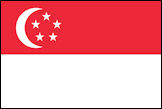
S.R. Nathan (எஸ். ஆர். நாதன் / 塞拉潘·纳丹, 1924 - ) ist Präsident Singapurs.
1999-09-01 - 2002-09-01

Der Neuseeländer Mike Moore (1949 - ) ist Generaldirektor der World Trade Organization.
Abb.: Mike Moore, 1997/1999
[Bildquelle: Webb, Murray 1947-: Mike Moore (circa 1997-1999).. Ref: DX-001-268. Alexander Turnbull Library, Wellington, New Zealand. http://natlib.govt.nz/records/23090237. "You can copy this item for personal use, share it, and post it on a blog or website. It cannot be used commercially without permission,"]
1999-09-02

Der chinesische Präsident Jiang Zemin (江泽民, 1926 - ) kommt auf Staatsbesuch nach Thailand.
Abb.: Jiang Zemin (江泽民) (rechts)
[Bildquelle: qejecit. -- Zugriff am 2011-12-24. -- Creative Commons Lizenz (Namensnennung, keine kommerzielle Nutzung)]
1999-08/10

In der Provinz Tak (ตาก) werden über 7.000 birmanische Flüchtlinge in das neue Flüchtlingslager Umpiem Mai umgesiedelt. Wesentlich beteiligt an der Umsiedlung ist das Volunteer Defence Corps (Or Sor) (อส. = กองอาสารักษาดินแดน).
Abb.: Lage von Umpiem Mai
[Bildquelle: http://australiankarenfoundation.org.au/images/Map.jpg?858. -- Zugriff am 2012-09-18]
1999-09
Ein Automechaniker aus Suphan Buri (สุพรรณบุรี) über den Unterschied zwischen Banharn Silpa-archa (บรรหาร ศิลปอาชา, 1932 - ) und Chuan Leekpai (ชวน หลีกภัย, 1938 - ):
"Chuan is a lawyer. So, he is not close to the people. Once Banharn implements a project in Suphan [สุพรรณบุรี], he makes it a point to come back to Suphan to follow up [ติดตาม] [tit tam] on its progress every week, until the day it is completed to his satisfaction. He takes a direct interest in every project. He never abandons it. What does Chuan do? He just sits in an air-conditioned office ... He lets irresponsible and corrupt local officials take full charge. He seldom goes back to Trang [ตรัง] to inspect local projects. Of course, the level of Suphan's development is superior [เหนือ] [nuea] to Trang's." [Quelle: Nishizaki, Yoshinori [訳吉武好孝, 西崎一郎]: Political authority and provincial identity in Thailand : the making of Banharn-buri. -- Ithaca, N.Y. : Cornell, 2011. -- 254 S. :Ill. ; 26 cm. -- (Studies on Southeast Asia ; 53). -- ISBN 978-0-8772-7753-8. -- S. 175]
Abb.: Lage der Provinz Trang (ตรัง)
[Bildquelle: CIA. -- Public domain]
1999-09-05
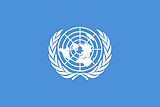
Thailand tritt dem International Covenant on Economic, Social and Cultural Rights (ICESCR) der UNO bei. Der Pakt war von der UNO 1966-12-16 beschlossen worden.
1999-09-12

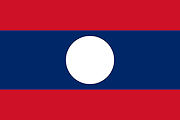
Bangkok Post veröffentlicht folgende Karten
Abb.: Heroin & amphetamine factories along the Thai-Burmese & Lao border
[Fair use]
Abb.: Drug traficking routes
[Fair use]
Abb.: Drug hot spots
[Fair use]
1999-09-14
Tod des Sängers Winai Chullabutsapa (วินัย จุลละบุษปะ, geb. 1922).
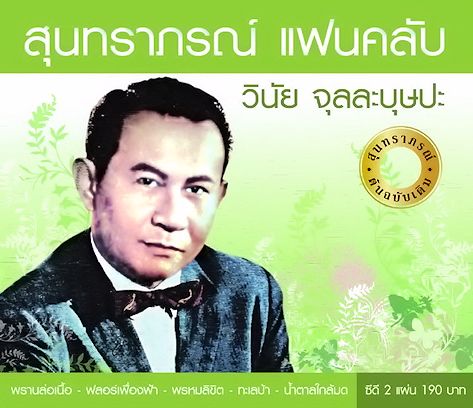
Abb.:
CD-Titel
[Fair use]
1999-09-17
Die Veranstalter des Bangkok Film Festival weigern sich, an einem niederländischen Film die von der Zensur geforderten Schnitte vorzunehmen. Sie führen darum den Film "Jesus is a Palestinian" (Jezus is een Palestijn) gratis auf. Die Zensur hatte gefordert, eine Sexszene zu schneiden.
Abb.: Plakat
[Bildquelle: Wikipedia. -- Fair use]
1999-09-17


Die ersten Thai-Soldaten der internationalen Friedenstruppe für Ost-Timor treten an. Insgesamt will Thailand 1500 Soldaten, Mediziner und Techniker nach Osttimor schicken.
Abb.: Lage von Ost-Timor
[Bildquelle: OpenStreetMap. -- Creative Commons Lizenz (Namensnennung, share alike)]
1999-09-19

Tod von ML Bua Kitiyakara (หม่อมหลวง บัว กิติยากร, geb. 1909), geborene ML Bua Sanidvongs (หม่อมหลวงบัว สนิทวงศ์), der Mutter der Königin.
Abb.: ML Bua Kitiyakara (หม่อมหลวงบัว กิติยากร) mit Gatte
[Bildquelle: th.Wikipedia. -- Public domain]
1999-09-30
Bewohner von Mien-Dörfern (เมี่ยน - เย้า / Yao) in Tambol Pha Chang Noi (ผาช้างน้อย), Amphoe Pong (ปง) brandschatzen Gebäude der Verwaltung des Wildlife Sanctuary. Aufgrund eines "Master Plan on the Environment" können die - für illegal erklärten - Dörfer keine Infrastruktur (Straßen, Elektrizität) erhalten. Sie schreiben einen Brioef "to whom it may concern":
Abb.: Lage von Amphoe Pong (ปง)
[Bildquelle: OpenStreetMap. -- Creative Commons Lizenz (Namensnennung, share
"Village No. 2, Phachangnoi Subdistrict [ผาช้างน้อย]
Pong District [ปง], Phayao Province [พะเยา], 5614030 September, 1999
Dear:
The enclosed, an account of the village, one letter. Concerning Village No. 2, Phachangnoi Subdistrict. It was established in this place in the year 1901 [2443 Buddhist Era], and [the inhabitants] have Thai citizenship since 1915 [BE 2457]. It has had a village boundary since 1950 [BE 2493], and in the year 1979 [BE 2522] Road No. 1188 was built through village No. 2. It is a proper road and according to law. Later, on 1 January 1981 [BE 2524], a nature reserve was announced behind [the village] but the extent of the reserve was not explained to the villagers. The work of the Phachangnoi Wildlife Sanctuary [เขตรักษาพันธุ์สัตว์ป่าดอยผาช้าง] has obstructed the lives and the progress of the villagers here. Among the examples are:
- The Royal Project [มูลนิธิโครงการหลวง] [for Hilltribe Development] has encouraged the planting of flowers and fruit suited to cold climate. When the Armed Forces Development Command was to lay the access road, the Wildlife Sanctuary prohibited it from being built in village No. 2, and the Project was moved to village No. 7 of Phachangnoi Subdistrict [Sipsongphatthana Village] [บ้านสิบสองพัฒนา].
- Public health issues in Village No. 2. The village is over 13 kilometers away from the health center in the village of Pangkha [บ้านปางค่า], and it is appropriate to build a health center in Village No. 2. There is budget for it, and sufficient wood for its construction. But the Wildlife Sanctuary has persistently prohibited its construction in Village No. 2, and instead it was built in Village No. 7 of Phachangnoi Subdistrict.
- The school in Village No. 2, Huai Kok [บ้านห้วยกอก], is a branch of the school in Pangkha village, that is 14 kilometers away from Village No. 2. There is sufficient number of students for grades 1 through 6 to build an independent school, and Bangkok university students are ready to come and build it for us. But the Wildlife Sanctuary does not allow the construction of any permanent buildings that would
improve the village. Each and every day the students have to travel to Pangkha village, a distance of 14 kilometers which they must cover on foot in the rainy season when Road No. 1188 is not passable [by vehicles]. This is because since 1979 [BE 2522] it has been within the jurisdiction of the Wildlife Sanctuary that does not allow for any improvements.Villagers have held meetings and written documents to ask for assistance and justice in the improvement of the village. Villagers have rented tractors to repair the road to the villages of Sanam Tai [บ้านสนามใต้], Huai Ien [บ้านห้วยเย็น ?], Sanam Nüa [บ้านสนามเหนือ], and Nam Puk Nüa [บ้านน้ำ
ปุก เหนือ]. All five are [classified as] Village No. 2. Each time [they have the road repaired], the villagers have been arrested by Wildlife Sanctuary staff. They will not allow any repairs. The Director of the Wildlife Sanctuary used a tractor to build a road into the Sanctuary. Why was it built? Everyone at the station ought to know. Everyone involved states that it was done for the officials who allowed him to take this action. Because of these matters, villagers’ trust in these officials deteriorated significantly, and the forest within the jurisdiction of the Sanctuary is absolutely destroyed. Anyone with questions about this can pay a visit and we invite people to come and see it with their own eyes. When villagers want to transport their crops [to market] through the Sanctuary checkpoint, they have to pay. Sanctuary staff persistently fleeces the villagers.Because of the matters related above, the people (ratsadorn [ราษฎร]) in Village No. 2 have been under severe pressure for full eighteen years. Consequently they burned the Wildlife Sanctuary station. The citizens of Village No. 2 acted reasonably given the circumstances, and there was no instigator behind this act. This took place because the needs of the citizens in Village No. 2 were clear. We had to find an outlet in the vicinity of Village No. 2. We chose place 1A within the reserve. We ask for assistance from various agencies. The people in Village No. 2 need progress, education, and healthcare. Thus we call on you to ask for justice from various authorities, and for land from the Wildlife Sanctuary.
Respectfully,
The People of Village No. 2 Phachangnoi Subdistrict Pong District, Phayao Province"[Übersetzt in: Hjorleifur Jonsson: Mien relations : mountain people and state control in Thailand. -- Ithaca : Cornell, 2005. -- 198 S. : Ill ; 24 cm. -- ISBN 0801472849. -- S. 132ff. -- Fair use]
1999-10
Ein Bauarbeiter aus Suphan Buri (สุพรรณบุรี) über die Korruption von Banharn Silpa-archa (บรรหาร ศิลปอาชา, 1932 - ):
"Banharn may be corrupt, but he is our corrupt Member of Parliament."
[Quelle: Nishizaki, Yoshinori [訳吉武好孝, 西崎一郎]: Political authority and provincial identity in Thailand : the making of Banharn-buri. -- Ithaca, N.Y. : Cornell, 2011. -- 254 S. :Ill. ; 26 cm. -- (Studies on Southeast Asia ; 53). -- ISBN 978-0-8772-7753-8. -- S. 187]
1999-10
Ein Wachmann aus der Provinz Suphan Buri (สุพรรณบุรี) über den Unterschiede zwischen Banharn Silpa-archa (บรรหาร ศิลปอาชา, 1932 - ) und Chuan Leekpai (ชวน หลีกภัย, 1938 - ) aus Trang (ตรัง):
Abb.: Lage der Provinz Trang (ตรัง)
[Bildquelle: CIA. -- Public domain]
"In Thailand, an honest politician can't do much to develop his province. Have you ever been to Trang [ตรัง]? It is the home of the current prime minister, Chuan [in 1999], but it is still so backward ... You know why? Because Chuan is too honest, to the point of being stupid [sue jon ser]. He does everything according to the law." [Quelle: Nishizaki, Yoshinori [訳吉武好孝, 西崎一郎]: Political authority and provincial identity in Thailand : the making of Banharn-buri. -- Ithaca, N.Y. : Cornell, 2011. -- 254 S. :Ill. ; 26 cm. -- (Studies on Southeast Asia ; 53). -- ISBN 978-0-8772-7753-8. -- S. 186]
1999-10-01

Fünf Bewaffnete, die sich Vigorous Burmese Student Warriors nennen, stürmen die Botschaft von Myanmar in Bangkok und nehmen 89 Geiseln, davon 13 Botschaftsangestellte. Die Geiselnehmer wollten den Botschafter töten, der das Haus jedoch verlassen hatte. Gegen freies Geleit an die birmanische Grenze geben die Geiselnehmer die Geiseln frei.
In Folge davon werden über 60 Volunteer Defence Corps (Or Sor) (อส. = กองอาสารักษาดินแดน) zum Studenten-Flüchtlingslager Maneeloy (มณีลอย), Provinz Ratchaburi (ราชบุรี), geschickt, um die dortigen birmanischen Studenten zu bewachen. Die Geiselnehmer waren zuvor in dieser Sicherheitszone interniert.
Abb.: Lage von Maneeloy (มณีลอย)
[Bildquelle: http://www.shoklo-unit.com/MTF/map_refugee.php. -- Zugriff am 2012-09-30. -- Fair use]
1999-10-01

Der birmanische General Khin Nyunt (ခင်ညွန့်, 1939 - ) besucht USWA-Kommandant (United Wa State Army / 佤邦联合军 / ဝပြည် သွေးစည်းညီညွတ်ရေး တပ်မတော်) Wei Hsue-kang (魏學剛 / ประสิทธิ์ ชีวินนิติปัญญา / ชาญชัย ชีวินนิติปัญญา / สุชาติ พันธุ์เลิศกุล, 1952 - ) an der Baustelle von dessen Hauptquartier "46" gegenüber von San Ma Ked (บ้านสันมะเค็ด, Amphoe Mae Fa Luang - แม่ฟ้าหลวง).
Abb.: Lage von Mae Fa Luang (แม่ฟ้าหลวง)
[Bildquelle: OpenStreetMap. -- Creative Commons Lizenz (Namensnennung, share alike)]
"General Khin Nyunt (birmanisch ခင်ညွန့်) (* 11. Oktober 1939 in Kyauktan, Yangon-Division, Birma) ist Offizier und Politiker in Myanmar. Er war Chef des Militärischen Geheimdienstes und vom 25. August 2003 bis zum 18. Oktober 2004 Premierminister des Landes. Er gilt als der Initiator von Waffenstillstandsverhandlungen und Verträgen zwischen dem Militärregime und verschiedenen ethnischen bewaffneten Bewegungen, z. B. mit der United Wa State Army ( 佤邦联合军 / ဝပြည် သွေးစည်းညီညွတ်ရေး တပ်မတော်) und der Kachin Independent Army (ShangLawt Hpyen)." [Quelle: https://de.wikipedia.org/wiki/Khin_Nyunt. -- Zugriff am 2016-02-28]
"Wei Hsueh-kang (simplified Chinese: 魏学刚; traditional Chinese: 魏學剛; pinyin: Wèi Xuégāng; Wade–Giles: Wei Hsüeh-kang, born on 29 May 1952)[1] also known as Prasit Cheewinnitipanya (Thai: ประสิทธิ์ ชีวินนิติปัญญา; rtgs: Prasit Chiwinnitipanya) or Charnchai Cheevinnitipanya (Thai: ชาญชัย ชีวินนิติปัญญา; rtgs: Chanchai Chiwinnitipanya) and Suchat Phanloetkun (Thai: สุชาติ พันธุ์เลิศกุล),[2] is a military commander of the United Wa State Army (佤邦联合军 / ဝပြည် သွေးစည်းညီညွတ်ရေး တပ်မတော)်. He has been accused of illegally trafficking drugs in Wa State (Mēng Vax / Meung Va / 佤邦 / ဝပြည်နယ်) (an unrecognized state in Myanmar), in the US, and through Myanmar's border with China.[3] Following the 2015 jade mine disaster in Hpakant (ဖားကန့်), Kachin State (Jingphaw Mungdaw), Wei Hsueh-kang was accused of exploiting locals and illegally funding mining operations in the area. This claim however, could not be verified or denied by Wei himself, as he was still in hiding.[4]
Insurgency careerOriginally a member of Khun Sa’s (ခွန်ဆာ / 張奇夫 / จันทร์ จางตระกูล, 1934 - 2007) Mong Tai Army (မုန်တိုင်းတပ်မတော်, MTA), Wei Hsueh-kang was one of the original founders of the UWSA in 1989, following the collapse of the armed wing of the Communist Party of Burma (ဗမာပြည်ကွန်မြူနစ်ပါတီ, CPB) in 1988.
Narcotics traffickerWei Hsueh-kang was believed to have remained closely associated with Khun Sa after he left the MTA, especially during the height of opium production in the Golden Triangle, and remains wanted by the Bureau for International Narcotics and Law Enforcement Affairs for drug offences committed within the United States; offering a $2 million reward for information leading to his capture and arrest.[5] He is currently believed to be in Myanmar, probably within UWSA controlled territory of Wa State.
Although Wei Hsueh-kang was granted Thai citizenship in 1985, three years later in 1988, he was facing a sentence of life imprisonment by the Thai Government.[6] He jumped bail however, and his Thai nationality was later revoked in 2001.[7][8]
Wei Hsueh-kang has since downsized his involvement in drug trafficking, partly in response to his wanted status by the US. However, his affiliation with the UWSA reinforced doubts about the extent of his involvement in drug trafficking.
EntrepreneurshipIn 1998, Wei Hsueh-kang founded the Hong Pang Group with money from the drug trade, and money from taking advantage of the privileges offered in the ceasefire deal by General Khin Nyunt (ခင်ညွန့်, 1939 - ). Its position in the country's economy, not just the Wa State, is reflected by a multitude of businesses it owns and controls in construction, agriculture, gems and minerals, petroleum, electronics and communications, distilleries, and department stores. Hong Pang Group is based at Panghsang with offices also in Yangon (ရန်ကုန်), Mandalay (မန္တလေး), Lashio (လႃႈသဵဝ်ႈ), Tachilek (တာချီလိတ်မြို့ / ท่าขี้เหล็ก) and Mawlamyine (မတ်မလီု).[9]
A fire in Panghsang (Bangkum / ပန်ဆန်း / 邦康) on 18 April 2009, destroyed the largest petrol station and over 10,000 tons of teak in a warehouse, both belonging to Wei Hsueh-kang."
[Quelle: https://en.wikipedia.org/wiki/Wei_Hsueh-kang. -- Zugriff am 2016-02-28]
Abb.: Wei Hsueh Kang (魏學剛 / ประสิทธิ์ ชีวินนิติปัญญา / ชาญชัย ชีวินนิติปัญญา / สุชาติ พันธุ์เลิศกุล) financial network
[Bildquelle: US Department of the Treasury. -- Public domain]
1999-10-17
Naturschützer sind besorgt über die zunehmende Beliebtheit von Insekten als Essen. Sie befürchten, dass so seltene Arten ausgerottet werden können.
Abb.: Insekten-Snacks, Nachtmarkt, Chiang Mai, 2010
[Bildquelle; Oliver Laumann. -- http://www.flickr.com/photos/oliverlaumann/5526482850/. -- Zugriff am 2011-12-24. -- Creative Commons Lizenz (Namensnennung, keine kommerzielle Nutzung)]
1999-10-20
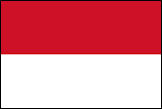
Die Beratende Volksversammlung Indonesiens wählt mit 373 Stimmen Abdurrahman Wahid (1940 - 2009) zum Präsidenten Indonesiens. Megawati Sukarnoputri, die Wahlsiegerin der Parlamentswahl, erhält nur 313 Stimmen.
Abb.: Abdurrahman Wahid
[Bildquelle: Indonesian Embassy in the Netherlands / Wikipedia. -- Public domain]
1999-10-27

Das City Council von Los Angeles (USA) definiert Thai Town (ไทยทาวน์) als Neighborhood in Los Angeles.
Abb.: Thai Town (ไทยทาวน์)
[Bildquelle: shimown. -- https://www.flickr.com/photos/shimown/29402720/. -- Zugriff am 2015-04-27. -- Creative Commons Lizenz (Namensnennung, share alike)]
Abb.: Lage von Los Angeles
[Bildquelle: OpenStreetMap. -- Creative Commons Lizenz (Namensnennung, share alike)]
Abb.: Lage von Thai Town (ไทยทาวน์)
[Bildquelle: OpenStreetMap. -- Creative Commons Lizenz (Namensnennung, share alike)]
"Thai Town (Thai language: ไทยทาวน์) is a neighborhood in the East Hollywood district of Los Angeles. It is the only designated Thai ethnic neighborhood in the United States.[1] The area contains many Thai restaurants, markets and shops, including import stores, silk clothing stores and massage spas. Geography
Thai Town is officially designated by the city of Los Angeles as a six-block area centered along Hollywood Boulevard between Normandie Avenue and Western Avenue. The neighborhood's entrance is marked by two statues of apsonsi (a mythical half human, half lion angel in Thai folklore).[2]
Public transportThe area is served by the Metro Red Line subway at the Hollywood/Western station in addition to Metro Rapid bus lines 757 & 780 and Metro Local bus lines 180, 181, 206, 207, & 217.
Thai populationLos Angeles has the largest Thai population outside of Thailand. Roughly 80,000 of California's estimated 120,000 Thai Americans live in Los Angeles.[3] It is also home to the world's first Thai Town. In 2002 there was an estimated 80,000 Thai immigrants living in Los Angeles. Thai Chinese are also included in the population. Because of this, Los Angeles is sometimes referred to as Thailand's 78th province. Like Los Angeles, Bangkok (Thailand's capital) is known as "the City of Angels" (กรุงเทพมหานคร - Krung Thep Maha Nakhon, Bangkok's official name, means "the City of Angels").
On the first Sunday in April, Thai Town celebrates Songkran (สงกรานต์), the Thai New Year, by closing off Hollywood Boulevard within its boundaries, and setting up food stands and entertainment on the street along with a parade on Hollywood Boulevard from New Hampshire Avenue to Winona Boulevard.[4]
HistoryThai Town began in the 1960s when many Thais went to Los Angeles to study (as a result of the Immigration and Nationality Act of 1965); many decided to stay and open businesses. A 1980s regional financial crisis led many Thais to come to Thai Town and find work.[5] City Council designated the neighborhood on October 27, 1999; during that time it had many of the estimated 80,000 Thais in Southern California.[6]
In July 2008, Laura Bush (1946 - ), the First Lady of the United States, granted the neighborhood recognition as a "Preserve America" community. This makes Thai Town eligible for $250,000 in "Preserve America" grants and $250,000 in other private and public grants."
[Quelle: http://en.wikipedia.org/wiki/Thai_Town,_Los_Angeles. -- Zugriff am 2015-04-27]
1999-10-28

Phra Dhammachayo (พระเทพญาณมหามุนี (ไชยบูลย์ ธมฺมชโย), 1944 - ), Abt des Wat Phra Dhammakaya (วัดพระธรรมกาย), und drei Mitarbeiter stellen sich der Polizei wegen der Anschuldigung, 40 Mio. Baht veruntreut zu haben.
Abb.: Lage des Wat Phra Dhammakaya (วัดพระธรรมกาย)
[Bildquelle: OpenStreetMap. -- Creative Commons Lizenz (Namensnennung, share alike)]
Abb.: Wat Phra Dhammakaya (วัดพระธรรมกาย)
[Bildquelle: ©Google earth. -- Zugriff am 2012-04-25]
Abb.: Phra Dhammachayo (พระเทพญาณมหามุนี (ไชยบูลย์ ธมฺมชโย))
[Bildquelle: Thanissaro / Wikipedia. -- Public domain]
"Phrarajabhavanavisudh (Thai: พระราชภาวนาวิสุทธิ์) is the abbot of Wat Phra Dhammakaya in Thailand and the president of the Dhammakaya Foundation. Childhood
He was born Chaibul Sutthipol on the 22 April 1944 to Janyong Sutthipol (his father) and Juree Sutthipol (his mother)[1] At Suan Kularb Schoo (โรงเรียนสวนกุหลาบวิทยาลัย)l, Bangkok, Thailand, Chaibul during his adolescence, started to be interested in Buddhism.[2] Having matriculated from Suankularb Wittayalai School (Secondary) in 1963, Chaibul was enrolled in the Faculty of Economics, Kasetsart University (มหาวิทยาลัยเกษตรศาสตร์).
While in college, he became a student at the Meditation Centre of Wat Paknam Bhasicharoen (วัดปากน้ำภาษีเจริญ) . It was here that he first met the Buddhist nun Chandra Khonnokyoong (จันทร์ ขนนกยูง, 1909 - 2000), one of the most respected Buddhist Meditation teachers at that time. Under Kuhn Yay's supervision, Chaibul attained a certain level of knowledge of Buddhism.[3]
Chaibul also got to know many fellow students both in Kasetsart University and in other universities who were interested in practicing meditation. One of these early acquaintances later became his assistant in the endeavor to establish the Dhammkaya Buddhist Centre. His assistant was Mr. Padet Pongswardi who became a Buddhist monk and is now well-known as Phrabhavanaviriyakhun (พระภาวนาวิริยคุณ, 1941 - ), the Vice-abbot of Wat Phra Dhammakaya (วัดพระธรรมกาย).
YouthAfter his graduation from Kasetsart University with a B.Sc degree in Economics, he was ordained at Wat Paknam Bhasicharoen on the 27th of August 1969.[4] After six years of monkhood, Ven. Dhammajayo became a teacher in the specialized approach to meditation known as Dhammakaya meditation. In the beginning, the meditation courses were carried out at a private lodging called 'Baan Dhammaprasit' within the compound of Wat Paknam Bhasicharoen. On 23 February 1970, the group moved to a plot of donated land in Pathum Thani Province (ปทุมธานี). Ven. Dhammajayo and a group of devoted Buddhists transform the site into a wooded parkland with a system of canals.[5]
ControversiesPhrarajbhavanavisudh has experienced his share of controversy. In 1999[6][7] and again in 2002[8][9] he was accused of charges ranging from fraud and embezzlement to corruption. Social critic Sulak Sivaraksa (สุลักษณ์ ศิวรักษ์) criticized him for promoting greed by emphasizing donations to the temple as a way to make merit.[6] Widespread negative media coverage at this time was symptomatic of Phrarajbhavanavisudh being made a scapegoat for commercial malpractice in the Thai Buddhist temple community in the wake of the 1997 Asian Financial Crisis.[10][11][12] In 2006 The Thai National Office for Buddhism cleared Phrarajbhavanavisudh of all accusations[13] when he agreed to return all the alleged embezzled funds to the name of the temple. He was subsequently restored to the position of abbot of Wat Phra Dhammakaya.[14]
PresentPhrarajbhavanavisudh influenced millions of people within Thailand and worldwide to practice meditation form of Dhammakaya. He set up the Dhammakaya Open University in Azusa, California in 2003 to offer degree courses in Buddhist studies. He encouraged Thais to quit drinking and smoking through the activities of Anti-Drinking and Anti-Smoking program. World Health Organization (WHO) presented the 2004 World No Tobacco Day Award to Phrarajbhavanavisudh in recognition for his achievement of activities of the Anti-Drinking and Anti-Smoking program on 31 May 2004[15] [4]
Phrarajbhavanavisudh persuaded Thai Youths to come to the temple and participate in various community and social services. Hundreds of people participate in various activities annually. Up to present, these programs have been in existence for almost two decades and a total of tens of thousands of young Thai people have ordained while almost five million young Thai people have participated in such activities. [5]
His movement has expanded to over eighteen countries worldwide. He has also established a Buddhist satellite network or Dhamma Media Channel (DMC.TV) with a 24 hour-a-day Dharma and meditation teachings broadcast to the audience worldwide.
In 2006, the World Buddhist Sangha Youth (WBSY) committee unanimously agreed to present the most honorable Universal Peace Award[16] – the highest award in commemoration of year 2550 B.E. – to Phrarajbhavanavisudh (Ven. Dhammajayo Bhikkhu), the president of Dhammakaya Foundation whose work in dissemination of Buddhism for more than 30 years is vitally recognized.[6]
ReferencesPublications
- Tawandhamma Foundation (2007) The Sun of Peace (Bangkok: New Witek), p.20
- ibid. p.24-25
- ibid. p.30
- ibid. p.44
- ibid. p.48
- Asiaweek 17 September 1999
- David Liebhold (1999) Trouble in Nirvana: Facing charges over his controversial methods, a Thai abbot sparks debate over Buddhism's future Time Asia 28 July 1999 [1]
- Yasmin Lee Arpon (2002) Scandals Threaten Thai Monks' Future SEAPA 11 July 2002 [2]
- Controversial monk faces fresh charges The Nation 26 April 2002
- Julian Gearing (1999) Buddhist Scapegoat?: One Thai abbot is taken to task, but the whole system is to blame Asiaweek 30 December 1999 [3]<
- Bangkokbiznews 24 June 2001 p.11
- Matichon 19 July 2003
- Bangkok Post 23 August 2006
- Yuwa Song News Today 23 August 2006
- Tawandhamma Foundation (2007) The Sun of Peace (Bangkok: New Witek), p.180
- ibid. p.185
Biographies
- Luang Phaw Dhammajayo (2006) Pearls of Inner Wisdom: Reflections on Buddhism, Peace, Life and Meditation (Bangkok: Dhammakaya Foundation) ISBN 978-974-94783-0-4
- Luang Phaw Dhammajayo (2007) Pearls of Inner Wisdom: Reflections on Buddhism, Peace, Life and Meditation (Singapore: Tawandhamma Foundation) ISBN 978-981-05852-1-1
- Luang Phaw Dhammajayo (2007) Tomorrow the World Will Change: A Practice for all Humanity (Singapore: Tawandhamma Foundation) ISBN 978-981-05775-7-5
- Luang Phaw Dhammajayo (2008) Journey to Joy: The Simple Path Towards a Happy Life (Singapore, Tawandhamma Foundation) ISBN 978-981-05963-7-8
- Luang Phaw Dhammajayo (2008) Lovely Love (Singapore, Tawandhamma Foundation) ISBN 978-981-080044-4
- Tawandhamma Foundation (2007) The Sun of Peace (Bangkok: New Witek) ISBN 978-974-88547-9-3"
[Quelle: http://en.wikipedia.org/wiki/Phrarajbhavanavisudh. -- Zugriff am 2011-12-24]
1999-10-30

Einweihung der neuen Cathedral of the Sacred Heart (อาสนวิหารพระหฤทัย) in Chiang Mai (เชียงใหม่)
Abb.: Lage der Cathedral of the Sacred Heart (อาสนวิหารพระหฤทัย)
[Bildquelle: OpenStreetMap. -- Creative Commons Lizenz (Namensnennung, share alike)]
Abb.: Cathedral of the Sacred Heart (อาสนวิหารพระหฤทัย), Chiang Mai (เชียงใหม่), 2010
[Bildquelle: Takeaway / Wikipedia. -- GNU FDLicense]
1999-11

Es erscheint:
Richard, Amy O'Neill: International trafficking in women to the United States : a contemporary manifestation of slavery and organized crime. -- Washington, D.C. : Center for the Study of Intelligence, DCI Exceptional Intelligence Analyst Program, 1999-11. -- 70 pages : digital, PDF file. -- Online: https://www.cia.gov/library/center-for-the-study-of-intelligence/csi-publications/books-and-monographs/trafficking.pdf. -- Zugriff am 2016-01-26
"This technique was used in 1995 when Thai traffickers and a German national, Ludwig Janak, trafficked Asian women from Thailand to the US Janak used his company, Bavarian Thai International Manpower Company, to sponsor and submit the visa applications. The applications were generally dropped off in a consular in-box and the embassy would adjudicate the visa requests. Only one woman ever saw a consular officer, and none had ever met Janak as the Thai traffickers arranged all the details." [a.a.O., S. 7f.]
"In Thailand, one trafficker claims that another trafficker paid police approximately $12,000 to “turn a blind eye” when the trafficker was found with some 300 passports. Local Thai police have also been known to extort money from potential US visa applicants who are found with counterfeit or photo-altered Thai passports."
[a.a.O., S. 8]
"Atlanta’s airport, for example, was chosen as the sole entry point for a Thai trafficker who brought in some 90 women during 1994 and 1995. He selected Atlanta because the city was then preparing for the Olympics and he believed the Thai women would blend in with the multitude of ethnic nationalities that were arriving during that period. Additionally, Atlanta was attractive because of the low number of Asian ethnic immigration officials working there."[a.a.O., S. 11]
"Thai trafficked victims were rotated among 15 to 18 different brothels in the United States from 1994 to 1995. In a similar case involving Asian women, a Thai trafficker rotated Asian women around 20 different brothel houses in 20 different cities. These women were forced to move frequently, and not work at a brothel longer than a month."[a.a.O., S. 12]
"Thailand is one of the primary source countries for the United States. According to the American Embassy in Bangkok, at least four loosely organized groups smuggle and traffic Thai women for delivery to US brothels. They send roughly 20 to 30 women a month to the US and Canada, generally using altered or impostor Thai passports. By other accounts, at least seven families in Thailand are engaged in smuggling and trafficking women into the United States for prostitution.Many of these women have been told they will be seamstresses and hostesses but arrive to find themselves forced into prostitution. This is often the case with Chinese victims trafficked from rural areas in the PRC. In other cases, Asian women are brought to the US with knowledge of their work as prostitutes, but find themselves in slave-like situations"
[a.a.O., S. 14]
"It is illustrative to examine fees from one case involving an Asian trafficker that appears characteristic for other Asian traffickers. In this case, a Thai smuggler is paid between $13,000 to $15,000 for every successful entry a woman made into the US. The money covers the passport (typically sold for $1,500 to $3,000), airline ticket, and additional fees paid to the Thai recruiting agent and the “jockey” who assists in bringing the women into the United States. Thai recruitment agents receive a commission of about $800 to $1,400 for each woman he or she recruited. The “jockey,” or person who actually escorts a woman or girl from Thailand to the US, is usually paid about $1,000 per woman or girl he successfully admits to the US. Thus, the smuggler usually makes about $7,500 to $9,000 per woman.Traffickers have also come up with various means to transport the money back to Thailand and the agents. The “jockey” may be responsible for conveying the impostor passport and the $13,000 back to the Thai smuggler in Thailand. Alternatively, the money is wired through companies to Thai bank accounts.
Overall profits in the trade can be staggering, as several cases indicate. Thai traffickers, who incarcerated Thai women and men in a sweatshop in El Monte, California, are estimated to have made $8 million dollars over about six years.Thai traffickers, who enslaved Thai women in a New York brothel, made about $1.5 million over roughly a year and three months. In that case, the women were made to pay debts ranging from $30,000 to $50,000. The women were forced to charge $130 per client; the madam of the brothel would receive $30 and the smugglers would receive $100. Sometimes, a woman at the brothel might be sold outright to the madam for $15,000 or more depending on her beauty.
One Thai trafficker estimates that he made about $215,000 over approximately two years. In this case as well, brothel owners would pay $7,500 to $15,000 for each woman, though her debt would be around $40,000. Less attractive women would be exchanged or sold off for less money."
[a.a.O., S. 19]
"In one Dallas brothel, Thai nationals were locked up and forced to work as prostitutes. They were treated like animals in that if they did not do as they were told, they would not receive any food.
[a.a.O., S. 25]
"INS [Intelligence and National Security] has also come under criticism for previous trafficking in women investigations. According to one California INS agent, mistakes, mismanagement, and neglect occurred in investigating the El Monte Thai slave labor case, resulting in the workers spending more time in slave-like conditions. In 1988, a notice of inspection for the El Monte compound was given to the perpetrators, the Manasurangkun family, three days in advance of the inspection. This gave the family time to scatter the workers. INS watched the workers scatter, but was helpless to do anything because the notice of inspection was an administrative, not criminal, action. Next, INS got an administrative subpoena that the family did not comply with. INS subsequently arrested the family for harboring aliens, but had to let them go for lack of evidence. INS then closed the case, claiming that the garment company was no longer in existence."[a.a.O, S. 36]
"US v. Wattanasiri [วัฒนศิริ] 1995Background/Deception: In conjunction with Thai traffickers, Ludwig Janak, a German national who operated a tour guide service in Thailand, recruited Thai women to come to the United States to work. Several of the women were told they would have good jobs working in restaurants. Once in the US, Thai traffickers and a Korean madam forced the women into prostitution.
Confinement: The women were held against their will at a brothel house and forced to work as prostitutes until their $35,000 smuggling debt was paid off. The women were kept in the underground brothel by bars on the windows and 24-hour surveillance. The defendants required that each woman sleep with four to five hundred customers to pay off the smuggling fee.Outcome: A total of 18 defendants were indicted on charges of kidnapping, alien smuggling, extortion, and white slavery. Twelve defendants were successfully prosecuted; the rest had fled to Thailand. Thus far, only two have been extradited from Thailand. The defendants were given sentences of between four and nine years.
US v. Manasurangkun 1995Background/Deception: Some 70 to 78 Thai laborers, predominantly women from impoverished backgrounds with little education, were brought to the United States. The Thai traffickers promised the women high wages, good working hours, and freedom. Once they arrived in the United States, they were forced to labor in a sweatshop, working some 20-hour shifts in a garment factory.
Confinement: These Thai nationals were held against their will and systematically abused. The laborers were incarcerated in primitive conditions in a clandestine garment factory. High perimeter walls, razor wire, and corrugated steel panels were erected to conceal the facility. Additionally, around the clock sentries were installed to ensure no one escaped from the compound. The workers were made to pay an indentured servitude debt of between $8,000 and $15,000 and forced to write fake letters home, praising their working conditions.Outcome: Seven defendants were convicted of alien smuggling, involuntary servitude, and civil rights violations. They received sentences ranging from four to seven years, with one defendant receiving seven months. Restitution in the amount of $4.5 million was ordered for the victims. Two additional defendants remain fugitive."
[a.a.O., S. 49f]
"Thai Criminal NetworksBesides the Triads and the Yakuza [ヤクザ], Thai criminal networks are involved in trafficking in women. Law enforcement reports that there are at least seven “families” in Bangkok, Thailand who recruit, sell, and smuggle Asian women throughout the world, including the US, to serve as prostitutes. These families secure identity/travel documents, arrange travel itineraries, and then broker the women to agents representing brothels in the US, Japan, Canada, and Australia. The agents charge the women roughly $40,000 to effect entry into the US. Upon entry, the agent is responsible for paying a fee to the smuggling organization in Thailand. The female’s debt is repaid by her engagement in prostitution. Until the payment is made, the woman is under the control of the agent and is frequently sold, battered, or exchanged. The women are smuggled into a foreign country utilizing photo-substituted or impostor Thai passports. After arrival the passports are usually returned to the smuggler in Thailand and recycled. The Thai smugglers use escorts called “jockeys” to transport the females to the US. The jockey is paid $1,000 per person for the trip. He assists in getting the non-English speaking women through the INS and Customs inspection process. After clearing Customs, the jockey delivers the women to the domestic agent who will then place her with the brothel
[a.a.O., S. 57]
1999-11-01
Premiere des Films Bangkok Dangerous (บางกอกแดนเจอรัส เพชฌฆาตเงียบ อันตราย) von den Pang Brothers (彭氏兄弟, 1965 - )
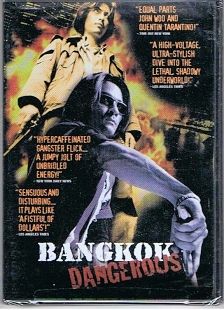
Abb.: Plakat
[Bildquelle: th.Wikipedia. -- Fair use}
|
"Bangkok Dangerous (Thai: บางกอกแดนเจอรัส เพชฌฆาตเงียบ อันตราย) is a 1999 Thai crime film written and directed by the Pang Brothers (彭氏兄弟, 1965 - ). Stylishly edited, the story of a deaf and mute hitman was the debut film for the twin-brother team of filmmakers. A 2008 remake of the same name also directed by the Pangs, stars Nicolas Cage (1964 - ). This film was also unofficially remade as Pattaya (பட்டாயா) a 2006 Indian Tamil movie . PlotKong is a deaf-blind-mute gunman, an assassin for hire who can neither hear his gunshots nor see the people pleading with him not to kill them. He receives his guidance through Aom, a hostess from a Bangkok go-go bar who clings to his back and gives him physical instruction. Kong lost his hearing when he was a child. Because of his disability, he was taunted by other children and grows up into an angry young man. At a target range, he finds he has a knack for target shooting when he visualizes the faces of the boys that taunted him in the target. His deafness gives him an edge in shooting, as he doesn't react to the gunshots and can't even see his target. He eventually gets a job as a janitor at the range'. One day while cleaning up, a customer named Joe is in the Bangkok forest with his girlfriend, Aom. Jo notices Kong watching them. He then offers the pistol to Kong, who impresses Jo and Aom with his pinpoint shooting. Joe then takes Kong under his wing and teaches him how to shoot. When Jo injures his gun hand in a battle, Kong is ready to take on more work. Working for a mob boss, Kong is sent on a job to Hong Kong. He shoots his target while riding on the Hong Kong subway with Aom on his back. When Kong returns to Bangkok, he catches a cold and needs medicine, so he stops at a pharmacy and meets Fon, a pretty pharmacist. With Fon, a special Thai massage with happy ending grows into something deeper. This changes Kong's perspective on life as he realizes that life can be meaningful, even for a deaf-mute assassin like him. Aom has trouble with one of the mob boss' henchmen. She spurns him but he rapes her. Enraged, Joe takes matters into his own hands, killing the henchman, which brings the mob's wrath down on Joe, which in turn leads to more revenge killing by Kong, and a final big shoot-out in a water bottling plant. Cast
At the 2006 Cannes Film Festival, the Pang Brothers announced they would remake Bangkok Dangerous (ฮีโร่ เพชฌฆาต ล่าข้ามโลก) with Nicolas Cage (1964 - ) in the lead role, though Cage's character would not be deaf. With the working titles Big Hit in Bangkok and Time to Kill, shooting took place in Bangkok in August 2006 with the release set for September 2008." [Quelle: http://en.wikipedia.org/wiki/Bangkok_Dangerous_%281999_film%29. -- Zugriff am 2013-03-19] |
1999-11-02

Vor einer Razzia gegen illegale Fremdarbeiter entlassen viele Firmen ihre illegalen Arbeitskräfte. Über 150 Firmen müssen dann wegen Arbeitskräftemangels schließen, in der Provinz Tak (ตาก) müssen fast alle Fabriken wegen Arbeitskräftemangel schließen. Hunderte von birmanischen illegalen Arbeitskräften fliehen vor der Ausschaffung nach Myamnar. Tausende suchen an der Grenze nach Myanmar Unterschlupf.
Abb.: Lage der Provinz Tak (ตาก)
[Bildquelle: CIA. -- Public domain]
1999-11-02
Laut Umweltschützern wurde bei den Dreharbeiten zum Hollywood-Film "The Beach" (siehe zum 1998-11-05) der Maya-Bay (อ่าวมาหยา) auf Koh Phi Phi Leh (เกาะพีพีเล) verwüstet. Die Filmemacher bestreiten das.
Abb.: Lage von Koh Phi Phi Leh (เกาะพีพีเล)
[Bildquelle: OpenStreetMap. -- Creative Commons Lizenz (Namensnennung, share alike)]
Abb.: Lage des Maya-Bay (อ่าวมาหยา)
[Bildquelle: OpenStreetMap. -- Creative Commons Lizenz (Namensnennung, share alike)]
1999-11-05

In Bangkok werden in einem geheimen Laboratorium 500 kg Chemikalien beschlagnahmt, die für die Herstellung von 10 Mio Pillen Ya Ba [ยาบ้า] bestimmt sind.
1999-11-08
Tod von Phin Bua-on (ผิน บัวอ่อน aka Amnat Yuthawiwat - อำนาจ ยุทธวิวัฒน์, 1930 - 1999), bis 1969 Mitglied des Zentralkomitees der Communist party of Thailand (CPT - พรรคคอมมิวนิสต์ แห่งประเทศไทย), dann Geheimagent und Kommunistenjäger der Regierung
Abb.: Einbandtitel eines Buchs über Phin Bua-on, 2001
1999-11-14

Tod des Thaiisten William J. Gedney (geb. 1915).
"William J. Gedney (* 4. April 1915 in Orchards, Washington; † 14. November 1999 in Ann Arbor, Michigan) war ein US-amerikanischer Linguist südostasiatischer Sprachen und Thaiist. Nach seinem Examen, das er 1935 am Whitman College mit summa cum laude abschloss, arbeitete Gedney als Englischlehrer in Oregon und im Staat Washington. In den schulfreien Sommermonaten beschäftigte er sich ernsthaft mit der Linguistik, doch wurde er beim Ausbruch des Zweiten Weltkriegs zur Army Language Unit in New York City eingezogen, wo er sich mit der thailändischen Sprache beschäftigte. Gleichzeitig ging er einem Sanskrit-Studium an der Yale-Universität nach.
1947 schloss Gedney seine Promotion ab und siedelte nach Thailand um, wo er seine Studien zur thailändischen Sprache und Literatur bei einigen der wichtigsten Gelehrten des Landes fortsetzte. Gleichzeitig begann er eine Sammlung an thailändischer Literatur aufzubauen, die auf über 14.000 Exemplare anwachsen sollte. Diese kleine Bibliothek verschenkte er 1975 an die Universität Michigan. In den folgenden zwei Jahrzehnten arbeitete Gedney über die Kam-Tai-Sprachen und führte zahlreiche Projekte hierzu durch. Er suchte insbesondere viele Vertreter der weniger gesprochenen Sprachen dieser Familie in Südostasien und Südchina auf, um die Charakteristiken dieser Sprachzen festzuhalten. Dabei wurde er bekannt für die Exaktheit seiner Aufzeichnungen zu den tonalen und phonologischen Eigenarten dieser Sprachen.
Alles in allem arbeitete Gedney über 22 Sprachen, wie z. B. Saek (ภาษาแสก), Lue und Yay, die er tief erforschte. Seine Erkenntnisse legte er in einer achtbändigen Reihe nieder, die vom Center for South and Southeast Asian Studies an der Universität Michigan veröffentlicht wurden.
1980 schied Gedney aus dem Lehrkörper der Universität Michigan aus, nachdem er zwischen 1972 und 1975 als Dekan der Fakultät für Linguistik gewirkt hatte. Während seiner gesamten Karriere war Gedney in der Linguistic Society of America, der American Oriental Society der Siam Society der Association for Asian Studies und der Southeast Asian Linguistic Society tätig. 1981 diente er als Vizepräsident der American Oriental Society, 1982 als deren Präsident.
Mit der Konzentration auf Daten und seinen weitreichenden Kenntnissen der Kam-Tai-Sprachen wurde Gedney einer der hervorragenden Forscher über die vergleichend-historische Forschung des Siamesischen, der thailändischen Sprache, und anderen Tai-Sprachen. Doch sein Einfluss reichte weit über die Linguistik hinaus. Forscher anderer Fachrichtungen, wie Geschichte, Politikwissenschaft, Kunstgeschichte und Anthropologie, suchten seinen Rat.
William J. Gedney starb am 14. November 1999 in Ann Arbor, Michigan."
[Quelle: http://de.wikipedia.org/wiki/William_J._Gedney. -- Zugriff am 2012-06-18]
1999-11-15

NZZ: Nur vordergründiger Aufschwung in Thailand : Ein 2650 Milliarden Baht schwerer Klotz am Bein.
"Die Zeit ist offensichtlich vorbei, als sich jeweils samstags in Bangkoks Sukhumvit-Quartier (สุขุมวิท) in einem zur Gant- und Markthalle umgewandelten Lagerhaus neureiche Thai-Familien drängelten und wenigstens eine ihrer drei bis vier Mercedes-Limousinen zu günstigen Preisen feilboten, um durch das schnelle Beschaffen flüssigen Kapitals den befürchteten Abstieg in eine «Neue Armut» zu verhindern. Ende September konnte Thailands Regierung dem Internationalen Währungsfonds (IMF) mitteilen, dass sie angesichts der wirtschaftlichen Erholung auf die letzten 3 Mrd. $ des insgesamt 17,2 Mrd. $ umfassenden, im Sommer 1997 unter der Regie des Fonds zusammengestellten Rettungspaketes verzichten könne. Einige in den letzten Tagen von der Zentralbank (Bank of Thailand; BoT, ธนาคารแห่งประเทศไทย) veröffentlichte Daten deuten darauf hin, dass sich das Land, dessen Währungsprobleme vor zwei Jahren die bald einmal Asien-Krise genannte Kettenreaktion ausgelöst haben, nun tatsächlich auf einem soliden Weg der wirtschaftlichen Gesundung befindet. [...]
Nüchterne Analyse von S&P
Namentlich die beiden größten der privaten Banken, die Bangkok Bank (ธนาคารกรุงเทพ) und die Thai Farmers Bank (ธนาคารกสิกรไทย / 泰华农民银行, heute Kasikornbank), haben seit Januar 1998 mehrfach im In- und Ausland erfolgreich neues Kapital beschafft. Erst Ende Oktober konnte beispielsweise die Thai Farmers, die bei vielen Beobachtern als die am besten verwaltete Bank des Landes gilt, durch die zweite Ausgabe weiterer Aktien innert 18 Monaten ihr Betriebskapital um 24 Mrd. B erhöhen. Zusammengenommen haben die privaten und die staatlich gestützten Banken nicht weniger als 390 Mrd. B an neuem Kapital mobilisieren können. Zumindest laut einem Mitte Oktober von Standard & Poor’s (S&P) veröffentlichten Bericht reicht dies allerdings bei weitem nicht aus: Um die Solvenz wiederherzustellen, zu erwartende Verluste durch das Abschreiben schlechter Kredite ausgleichen und eine angemessene Kapitaldeckung erreichen zu können, müsste der thailändische Bankensektor laut S&P noch weitere 863,5 Mrd. B an neuen Geldern auftreiben. Vor allem Finanzminister Tarrin (ธารินทร์ นิมมานเห
มินท์, Tarrin Nimmanahaeminda, 1945 - ) und der BoT-Gouverneur Mongkhol (จัตุมงคล โสณกุล, M.R.Chatu Mongol Sonakul, 1943 - ) protestierten alsogleich lauthals, der Bericht gehe von einer viel zu pessimistischen Einschätzung der Lage aus. S&P konterte die Kritik jedoch nüchtern: Die veröffentlichte Zahl beruhe auf einer «mittleren Annahme»; falls in Thailand die für den allfälligen Erlös aus der Liquidation von Schuldwerten ausschlaggebenden Immobilienpreise zu sinken begännen, so wären zur Rekapitalisierung gar über 1100 Mrd. B notwendig."[Quelle: NZZ Internationale Ausgabe. -- 1999-11-15. -- S. 7. -- Fair use]
1999-11-18
Decentralization Act. Gibt den regionalen und lokalen staatlichen Institutionen mehr Selbständigkeit.
1999-11-19
Premiere des Films Ruang Talok 69 (เรื่องตลก 69) von Pen-Ek Ratanaruang (เป็นเอก รัตนเรือง, 1962 - ).
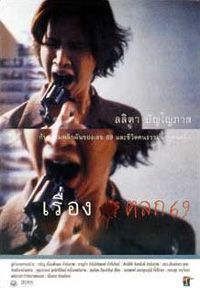
Abb.: Plakat
[Bildquelle: Wikipedia. -- Fair use]
|
"Ruang Talok 69 (Thai: เรื่องตลก 69, English: 6ixtynin9 or A Funny Story About 6 and 9), is a 1999 Thai crime film written and directed by Pen-Ek Ratanaruang (เป็นเอก รัตนเรือง, 1962 - ). It is the second feature film by the Thai writer-director. It stars Lalita Panyopas (ลลิตา ปัญโญภาส, 1971 - ), a popular star of Thai soap operas (ละคร). PlotTum (ตุ้ม) is a secretary working for a bank when the company is forced to shed staff. As the boss could not bear to select which staff to fire, he uses the Kau Cim (求籤)) to determine who must leave. Tum draws one of the unlucky numbers and is laid off. Back at her apartment building, she finds the elevator is out of order, and is somewhat bothered by a young man who is a little too helpful. She is nonetheless accommodating and friendly. Once alone, though, she envisions all kinds of suicidal scenarios, including drinking household cleaning chemicals or blowing her head off with a handgun. Her luck changes for the weirder the next morning when she discovers an instant noodle box in front of her door. It is filled with 500 baht bills. Apparently it's been left there because the number on her apartment door, 6, is missing a nail, so flips upside down, making it appear she lives in apartment 9, which is actually down the hall. Soon after, a couple of thugs from a Muay Thai (มวยไทย) camp ask her if she has seen the box. They force their way into her flat, only to be killed, accidentally. Tum decides to get rid of their bodies, get a plane ticket, obtain a fake passport and visa, take the noodle box with her and go spend the rest of her life somewhere else. But the gangster, Kanjit, who makes fake passports happens to be the very guy she must stay away from. More men sent by a Muay Thai promoter appears at Tum's apartment, where one quickly hid in her wardrobe when she returned home. A young policeman, who is the lover of her nosy neighbor, Pen, suddenly calls on her and discovers the bodies. The hidden man attracts the policeman's attention when he cocks his gun, and the subsequent firefight kills them both. As Tum tries to hide the two bodies, Pen (เพ็ญ) comes to visit, believing the policeman was still in her home. Another man arrives at the apartment later to seek out the missing men, and mistakenly thought he has killed the policeman after firing into the cop's body which was hidden behind a door. As Tum tried to clean up the mess and hide the cop's body later, Pen and other neighbours spies on her through the keyhole and mistakenly believe she was having an affair with the policeman. Pen contemplates on ways to figure out what Tum is doing, and ends up speculating the worst about her. Also, there's Tum's friend, Jim (จิ๋ม), who's distraught over her boyfriend cheating on her. Tum takes Jim with her to get her passport, and Jim accidentally gets caught in the crossfire. Jim, now dead, has been compromised and Tum makes off with the money. Tum remembers the reference of Pen when Pen was telling her about how the bodies were dumped down the lake and whatever goes down there disappears, and therefore dumps the money, escaping with just guilt. Cast
[Quelle: http://en.wikipedia.org/wiki/6ixtynin9. -- Zugriff am 2013-03-19] |
1999-11-19
In der täglichen Fernsehsendung (ITV - ไอทีวี) ชาวบ้านเดือดร้อน (Bauern in Not) beschwert sich eine Gruppe von Bauern aus der Provinz Trang (ตรัง) über eine unbefestigte Straße:
Abb.: Lage der Provinz Trang (ตรัง)
[Bildquelle: CIA. -- Public domain]
Abb.: Unbefestigte Straße, Thailand, 2014
[Bildquelle: Paul_the_Seeker. -- https://www.flickr.com/photos/paul_the_seeker/13955501479/. -- Zugriff am 2014-11-21. -- Creative Commons Lizenz (Namensnennung)]
"Our MPs have disappeared as soon as thei got elected. We#ve never seen their faces since the election [1996]" [Quelle: Nishizaki, Yoshinori [訳吉武好孝, 西崎一郎]: Political authority and provincial identity in Thailand : the making of Banharn-buri. -- Ithaca, N.Y. : Cornell, 2011. -- 254 S. :Ill. ; 26 cm. -- (Studies on Southeast Asia ; 53). -- ISBN 978-0-8772-7753-8 . -- S. 132]
1999-11-25
BankThai verabschiedet sich vom Großteil seines Investment-Banking und beschränkt sich auf Kern-Bankgeschäfte. Deshalb löst die Bank ihre Geschäftsbeziehung zu über 200 Firmen auf. Zu diesem Schritt sieht sich die Bank durch sie Finanzkrise gezwungen,
1999-11-29


Bei den Parlamentswahlen in Malaysia gewinnt die islamistische Parti Islam Se-Malaysia (PAS) in Terengganu, beinahe in Kedah. Im Parlament hat sie statt bisher 7 jetzt 27 Sitze. Diese Erfolge der PAS geben dem Islamismus in den vier muslimisch-malaiischen Provinzen Thailands Auftrieb.
Abb.: Lage von Terengganu und Kedah
[Bildquelle: CIA. -- Public domain]
1999-12
Ein Staatsbediensteter der Provinz Suphan Buri (สุพรรณบุรี) zur Frage, warum die Leute dort Banharn Silpa-archa (บรรหาร ศิลปอาชา, 1932 - ) wählen:
Abb.: Lage der Provinz Suphan Buri (สุพรรณบุรี)
Bildquelle: [Bildquelle: CIA. -- Public domain]
"They [the Bangkok based journalists and scholars] don't understand local politics at all. I want to ask them, "Have you ever lived in any village of Suphanburi [สุพรรณบุรี]? Have you ever talked to any villager here?" Villagers in Suphan are not stupid. They vote for a politician who does good things for them. Nothing is simpler. Do you need a college diploma to tell good MPs from bad MPs? No need! Only Bangkokians who make a fetish of diplomas [baa parinya] [บ้าปริญญา] say a thing like that [so that they can] look down on people in the countryside. That's ideology [the civil servant's own word]. A diploma is only a piece of paper. You can buy it in Thailand if you really want it." [Quelle: Nishizaki, Yoshinori [訳吉武好孝, 西崎一郎]: Political authority and provincial identity in Thailand : the making of Banharn-buri. -- Ithaca, N.Y. : Cornell, 2011. -- 254 S. :Ill. ; 26 cm. -- (Studies on Southeast Asia ; 53). -- ISBN 978-0-8772-7753-8. -- S. 131]
1999-12

Es erscheint die Parodie Tintin in Thailand.
Abb.: Einbandtitel
"Tintin in Thailand is a parody of the The Adventures of Tintin books by Hergé, released in 1999. It is written and designed to emulate a volume of the Tintin books, but is the author's own story. It was written by a Belgian author, Baudouin de Duve, who used the alias Bud E. Weyser, a name that is a play off of a name of American beer, Budweiser.[1] Design
Tintin in Thailand emulates the style and format of the original Tintin books, with some key differences. With the exception of the cover, the entire volume is in black and white. The characters are imitations of the originals, and are presented as acting uncharacteristically, such as by using profane language. "Bud E. Weyser" is listed as the author, and there is a one page foreword in French.
Copies were printed in Thailand to be distributed in Belgium, where Tintin in Thailand was thought to have been in circulation since December 1999. Thousands of copies in both French and English were also distributed in Thailand. The quality of the Thai copies was later found to supersede that of the Belgian copies.[2]
PlotThe plot opens on a rainy and cold Marlinspike Hall; the occupants, Tintin and Captain Haddock are miserable and poor because there are no new Tintin adventures sending them to adventures in the sun any more since the death of their creator Hergé. (This is the first of many self-references the plot makes.) As they consider their plight, Jolyon Wagg's wife arrives and ask them to go to Thailand to look for her husband who went there on a trip he won from his employer, the Rock Bottom Insurance Company, but never came back. The wife has already sent Thomson and Thompson there to look for Jolyon but without any results. As it is an all expense paid trip, the group eagerly accept and are soon off to Thailand. Nestor, Snowy and the cat are left behind, but Professor Calculus comes along too.
As the group checks in to their Bangkok hotel they are spotted by Derek Dimwit, a representative of the Marlinsprick [sic] Company that holds the rights to the Tintin franchise. He calls head office and is told that he must stop the group from going on any more adventures that would be the basis of a pirated book not controlled by the Marlinsprick Company.
The group head out to the red light district where they run into General Alcazar, now the owner of a Thailand bar after being deposed by General Tapioca. Alcazar has seen Jolyon Wagg pass through the bar, but he has gone north to Chiang Mai with a kathoey (transexual). Calculus and Haddock both hook up with prostitutes in the bar but Tintin prefers the company of a young boy instead (This is a reference to questions by fans regarding Tintin's sexuality in the original books).
The next day the group takes a flight north and soon run into Thomson and Thompson. The Thompson twins do not want the group to find Wagg as they enjoy being in Thailand at Wagg's wife's expense. However, the group picks up the trail to Jolyon Wagg who is living in a house outside Chiang Mai and finds that he does not enjoy the company of his kathoey partner. Jolyon longs for his wife's cooking, in particular her rabbit marinated in beer. After a series of misadventures the group finds itself back in Chiang Mai in time for the celebration of the new year of 2000. The story ends with Tintin being presented with the first copy of Tintin in Thailand, and he exclaims that this work will guarantee him many peaceful days in the sun.
ArrestsIn February 2001, the Hergé Foundation heard about Bud E. Weyser's attempts to market Tintin in Thailand as an unknown Tintin book for sale to distributors in Belgium. The Belgian police organized a sting operation, with an officer pretending to be a prospective buyer, and two arrests were made in Tournai. They then arrested the designer in Antwerp. The three confessed to producing more than 1,000 copies for sale in Belgium, and 650 copies were seized. All three suspects were subsequently released.
As of July 2007, copies of Tintin in Thailand could still be found in Bangkok. The Hergé Foundation has continued to take quick action to have copies that are posted online removed.[3]"
[Quelle: http://en.wikipedia.org/wiki/Tintin_in_Thailand. -- Zugriff am 2012-10-09]
1999-12


Tod der US-Missionarin Margaretta B. Wells (geb. 1902).
"Wells, Margaretta B. (1902-1999) Margaretta Burr Wells (Mrs. Kenneth E.), was born May 15, 1902, in Bottineau, N.D., and was the daughter of Scottish immigrants. Her father, A. G. Burr, became chief justice of the North Dakota Supreme Court. She graduated from Jamestown College, N.D., and earned a master's degree at the University of Michigan.
She was married in 1926 to the Rev. Kenneth E. Wells, Ph.D., a college classmate, who died in 1981. In 1927, they went as missionaries to Thailand, where they served for 40 years. She taught English in Chiang Mai [เชียงใหม่] at The Prince Royal's College [โรงเรียน, and in Bangkok at Wattana Academy [โรงเรียนวัฒนาวิทยาลัย]. She founded and taught at the Chiang Mai International School, was a writer and editor of The Siam Outlook mission magazine and was the first manager of the Bangkok Christian Bookstore. She was fluent in both Thai and northern Thai and saw brief service for her language skills with the federal government in Washington, D.C.
Her six published books are A Guide to Bangkok, A Guide to Chiang Mai, "Thai Fairy Tales, Good Manners Abroad, Florence Nightingale and Siam Story. Her articles appeared in numerous American magazine, including the National Geographic, and she was invited to present lectures before the Southeast Asia Society of Washington, D.C. She served as the only foreigner on the National Cancer Society Board in Thailand and was president of the American Women's Club in Bangkok. In May 1987, there was an exhibition of her fine arts collection at the 1846 Courthouse Museum, Portsmouth, as "Arts From the Golden Triangle."
[Quelle: Dictionary of Thai Christianity. -- http://www.herbswanson.com/dictionary.php. -- Zugriff am 2013-10-05]
1999-12-02
Großbrand mit Explosion der Thai Oil Refinery in Laem Chabang (แหลมฉบัง) Industrial Estate, Provinz Chonburi (ชลบุรี). 3 Tote, 13 Verletzte. Ursache. vermutlich menschliches Versagen.
Abb.: Lage von Laem Chabang (แหลมฉบัง)
[Bildquelle: OpenStreetMap. -- Creative Commons Lizenz (Namensnennung, share alike)]
1999-12-05

72. Geburtstag (6 mal 12 Jahre) von König Bhumibol.
Abb.: Königliches Emblem zum 72. Geburtstag des Königs
"His Majesty the King's initials, placed under the Royal Crown and above the eight-sided Royal Throne, signifies that His Majesty the King is the focus of the entire nation, a unifying force who commands the deepest love and respect among his subjects. The letters are in yellow, the colour of the day of His Majesty's birth, Monday, against the background of deep blue, the royal colour. This is surrounded by the discus-emblem of the Chakri Dynasty and the Thai numeral 9, signifying the 9th Reign of the Chakri Dynasty. The crest is flanked on both sides by seven-tiered royal umbrellas, and topped by the nine-tiered royal umbrella. The border is divided into four parts, representing the four regions of the country, in green, the colour of peace and abundance. A lotus is featured on each of the four points, as an offering to His Majesty the King on the occasion of His Majesty's 6th Cycle Birthday Anniversary.
The golden rays around the crest signify His Majesty the King's grace and benevolence, recognized throughout the Kingdom and beyond."
[Quelle: http://www.rama9art.org/artisan/emblem/rce5.html. -- Zugriff am 2013-01-14]
Zum 72. Geburtstag des Königs wird in Ban Krut (บ้านกรูด), Provinz Prachuap Khiri Khan (ประจวบคีรีขันธ์), Wat Phra Mahathat Chedi Phakdi Prakat (พระมหาธาตุเจดีย์ภักดีประกาศ) erbaut.
Abb.: Lage von Ban Krut (บ้านกรูด)
[Bildquelle: OpenStreetMap. -- Creative Commons Lizenz (Namensnennung, share alike)]
Abb.: Wat Phra Mahathat Chedi Phakdi Prakat (พระมหาธาตุเจดีย์ภักดีประกาศ), Ban Krut (บ้านกรูด), 2007
[Bildquelle: Anne G. -- http://www.flickr.com/photos/dolescum/965074707/in/photostream/. -- Zugriff am 2012-05-02. -- Creative Commons Lizenz (Namensnennung, keine kommerzielle Nutzung, share alike)]
1999-12-05

Zum 72. Geburtstag des Königs stiftet die Navaraj Damri Foundation in Chiang Mai (เชียงใหม่) 82 Plaketten (Point of Interest Plaque), auf denen Informationen zu Sehenswürdigkeiten in Thai und English gegeben werden.
1999-12-05

Zum 72. Geburtstag des Königs erscheint die offizielle Hagiographie:
King Bhumibol : strength of the land. -- [Bangkok] : National Identity Office, Secretariat of the Prime Minister, Office of the Prime Minister, 2000. -- 429 S. : ill. ; 24 cm. -- 9747772485. -- Online: http://de.scribd.com/doc/47594345/strength-of-the-land. -- Zugriff am 2013-02-13
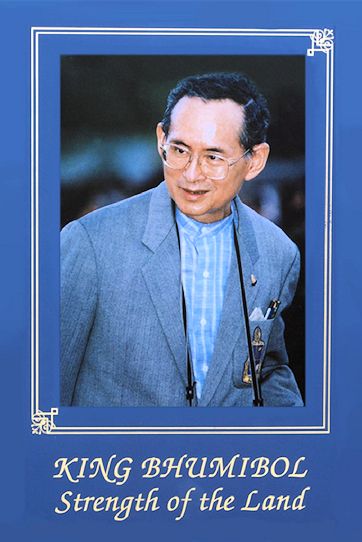
Abb.: Titel
1999-12-05

Eröffnung von BTS SkyTrain (รถไฟฟ้า-บีทีเอส). Das System wurde von der deutschen Firma Siemens geliefert, installiert und wird von dieser Firma gewartet.
Abb.: Linienführung des BTS SkyTrain, 2009
[Bildquelle: Hdamm / Wikimedia. -- Creative Commons Lizenz (Namensnennung, share alike)]
Abb.: BTS SkyTrain, 2004
[Bildquelle: Tre Lan. -- http://www.flickr.com/photos/tremeglan/2128298567/. -- Zugriff am 2011-12-24. -- Creative Commons Lizenz (Namensnennung, keine kommerzielle Nutzung, keine Bearbeitung)]
"Der Skytrain (Thai: รถไฟฟ้า-บีทีเอส, Aussprache: [rót fajfáː biːtʰiːʔèːt]) ist Teil des öffentlichen Nahverkehrssystems Bangkoks. Es wird von der Bangkok Mass Transit System (BTS) betrieben. Der Skytrain verläuft getrennt von der Bangkok Metro (รถไฟฟ้ามหานคร), der U-Bahn Bangkoks. Die Strecken des Skytrains sind zusammen rund 28 Kilometer lang und komplett auf Stelzen geführt. Geschichte
Ursprünglich wurde das System mit der gleichen Technik wie der Vancouver SkyTrain geplant, was jedoch 1992 durch Einmischung von politischer Seite aufgegeben wurde. Dieses erste Skytrain-Projekt wird manchmal zur besseren Unterscheidung mit dem aktuellen Projekt als Lavalin Skytrain bezeichnet. Das zweite Projekt entstand auf Basis von Siemens-Technik, diese hat, bis auf den Namen „Skytrain“, jedoch nichts mit dem ersten Projekt gemein, nicht nur die Technik, sondern auch die Linienführung ist eine andere. Seine beiden Strecken – die Silom-Linie und die Sukhumvit-Linie – wurden am 5. Dezember 1999 eröffnet.
An zwei Brücken über den Fluss Chao Phraya (แม่น้ำเจ้าพระยา) wurden bei deren Bau in den frühen 1990er-Jahren auch Fundamente für den Lavalin Skytrain gelegt. Das Fundament an der Taksin-Brücke (สะพานสมเด็จพระเจ้าตากสิ) wurde mittlerweile dafür genutzt, um die Silom-Linie über den Fluss nach Thonburi (ธนบุรี) zu verlängern. Die Fertigstellung dieser Verlängerung war ursprünglich für 2005 geplant, allerdings wurden die Bauarbeiten aufgrund politischer Einflussnahme unterbrochen. Am 15. Mai 2009 wurde die neue Teilstrecke eröffnet. Es befinden sich nun zwei Haltestellen im Stadtteil Thonburi: Krung Thonburi (สถานีกรุงธนบุรี) und Wong Wian Yai (สถานีวงเวียนใหญ่).
Die Verlängerung der Sukhumvit-Linie nach Südosten wurde im Oktober 2006 begonnen und am 12. August 2011 eingeweiht. Andere Verlängerungen der Linien sind im Gespräch. Für die Anbindung des neuen Flughafens wurde jedoch nicht der Skytrain verlängert, sondern eine komplett neue Bahnlinie (Suvarnabhumi Airport Link - รถไฟฟ้าเชื่อมท่าอากาศยานสุวรรณภูมิ) gebaut, die nicht der BTS-Technik entspricht. Am Bahnhof Phaya Thai (สถานีพญาไท) gibt es eine Umsteigemöglichkeit in den „Suvarnabhumi Airport Link“.
An drei Haltestellen gibt es eine Umsteigemöglichkeit zur „Blauen Linie“ der Bangkok Metro."
[Quelle: http://de.wikipedia.org/wiki/Bangkok_Skytrain. -- Zugriff am 2011-12-24]
1999-12-06


US-Nachrichtenmagazion TIME: The banker who saved the King / von Robert Horn: über Chumpol NaLamlieng (ชุมพล ณ ลำเลียง, 1945 -), Präsident von Siam Cement, der die königlichen Betriebe Siam Cement und Siam Commercial Bank vor dem Ruin bewahrte.
Abb.: Chumpol NaLamlieng (ชุมพล ณ ลำเลียง)
[Bildquelle: http://www.scb.co.th/board/th/board-chumpol.html. -- Zugriff am 2014-11-03. -- Fair use]
1999-12-06

Es erscheint:
Mydans, Seth <1946 - >: Bangkok opens Skytrain, but will it ease car traffic?. -- In: New York Times Times. -- 1999-12-06
Danach verbringt der durchschnittliche Bangkoker jährlich ca. 44 volle Tage im Verkehrsstau.
1999-12-06


Es erscheint
"The King is universally revered by the entire population of Thailand. ... In the villages, many are still too overawed even to look at him. Instead they put out handkerchiefs for him to walk on and save the scraps of cloth with his footprint in shrines at home. Thais have nothing but good things to say about their monarch, who in December celebrates his 72nd birthday, a highly auspicious milestone to Buddhists as the sixth cycle of 12 years. "Thailand wouldn't be worth living in if we didn't have him," says Pim Sairattanee [สาย
รัตนี ], also aged 72, a flower seller on Bangkok's busy Sukhumvit Road. "He has a white heart, there is magic, goodness and power in his heart," adds Prachob Virawong [วีระวง], 42, a street vendor from the poor northeast who sells fried grasshoppers in Bangkok. When boxer Somluck Khamsing [สมรักษ์ คำสิงห์, 1973 - ] won Thailand's first ever Olympic gold medal in Atlanta in 1996, it was a portrait of the King that he raised over his head in celebration. Says Bangkok political scientist Chai-anan Samudavanija [ชัยอนันต์ สมุทวณิช, 1944 - ] : "He is perhaps the only monarch anywhere who has total love and no fear."[...]
Many Thais are uneasy at the thought that they may be living in the twilight of Bhumibol's reign. Even as the nation prepares to celebrate his 72nd birthday, thoughts of the future are tinged with foreboding. The 47-year-old Crown Prince Vajiralongkorn has yet to achieve the same level of devotion among Thais that his father enjoys, and some say the King has set an impossibly high standard to follow. "
[Zitiert in: Marshall, Andrew MacGregor <1971 - >: A Kingdom in crisis : Thailand's struggle for democracy in the twenty-first century. -- 2. ed.. -- London : Zed, 2015. -- 240 S. ; 22 cm. -- ISBN 978-1-78360-602-3. -- S. 103. -- Fair use]
1999-12-07
Die Zensur verbietet die Aufführung des Films "Anna and the King" (siehe zu 1998-11-14), da er die Erinnerung an König Mongkut verletze und die Geschichte der Thai-Monarchie verzerre. (Die Zensur vergisst aber, sämtliche offiziösen Darstellungen der Thai Geschichte wegen Verzerrung der Geschichte der Thai-Monarchie zu verbieten).
1999-12-15


Die Generalversammlung der UNO beschließt:
"Resolves that, without cost to the United Nations, appropriate arrangements shall be made for international observances of the Day of Vesak at United Nations Headquarters and other United Nations offices, in consultation with the relevant United Nations offices and with permanent missions that also wish to be consulted." [Quelle: http://www.worldlii.org/int/other/UNGARsn/1999/192.pdf. -- Zugriff am 2013-01-13]
Vesakh (Pali: Vesākha; Sanskr.: वैशाख, Vaiśākha; Hindi: बैसाख, Baisākh = 2. Monat im Hindu-Kalender) oder Vesak, Wesak ist der höchste buddhistische Feiertag. Gefeiert wird Vesakh in Form einer Puja oder mit Prozessionen nach dem Lunisolarkalender am Vollmondtag des vierten Monats (nach dem Sonnenkalender im Mai oder in den ersten Junitagen). Das Vesakhfest erinnert an die Geburt, die Erleuchtung (Nirwana) und das vollkommene Verlöschen (Parinirvana) des Buddha Siddhartha Gautama und damit seinen Austritt aus dem Kreislauf der Wiedergeburt (Samsara).
Das Fest stammt ursprünglich aus der Tradition des Theravada-Buddhismus und wird heute von Buddhisten in aller Welt als der wichtigste gemeinsame Feiertag begangen. Er dient auch der bewussten Suche der Gemeinsamkeiten und gemeinsamen Wurzeln der unterschiedlichen buddhistischen Traditionen in aller Welt. Besonders in den Theravada-Ländern Südostasiens wird Vesakh als größtes Fest des Jahres gefeiert. Neben dem üblichen Vollmondfasten und den Puja-Zeremonien ist es oft auch Brauch, Tiere – insbesondere Vögel – freizulassen, um seinen Bemühungen Ausdruck zu verleihen, zum Wohl aller Wesen zu wirken. Häufig wird an diesem Feiertag die Internationale Buddhistische Flagge, als Symbol der weltweiten buddhistischen Einheit, gehisst.
In Deutschland sind die Buddhisten der verschiedenen Richtungen unter dem Dach der Deutschen Buddhistischen Union vereinigt, die alljährlich öffentliche Feiern zu Vesakh organisiert, zum Beispiel in München im Westpark. In Wien finden sie bei der Friedensstupa am Handelskai an der Donau statt.
Vesakh wurde, in Würdigung des buddhistischen Beitrags zur Weltkultur, 1999 auch von der UN-Generalversammlung als internationaler Feiertag anerkannt.
[Quelle: http://de.wikipedia.org/wiki/Vesakh. -- Zugriff am 2013-01-13]
1999-12-17


Es erscheint der US-Spielfilm "Anna and the King" mit Jodie Foster (1962 - ) als Anna Leonowens (1831 - 1915) und Chow Yun-fat (周潤發, 1955 - ) als König Mongkut (พระบาทสมเด็จ พระจอมเกล้าเจ้าอยู่หัว, 1804 - 1868) unter der Regie von Andy Tennant (1955 - ).
Soundtrack auf Spotify:
URI:
spotify:album:6dF8g9VSjj0Ol5xHsXiEcW
URL:
https://open.spotify.com/album/6dF8g9VSjj0Ol5xHsXiEcW
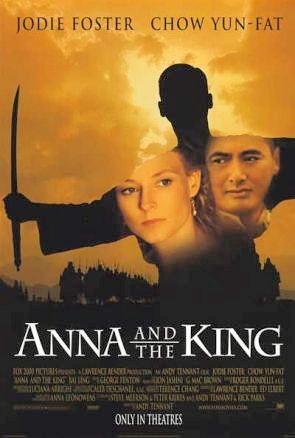
Abb.: Plakat
[Bildquelle: Wikipedia. -- Fair use]
1999-12-20
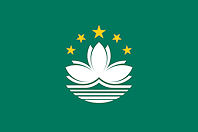
Die portugiesische Kolonie Macao ( 澳门) wird zur Sonderverwaltungszone (特别行政区) Chinas.
Abb.: Lage von Macao ( 澳门)
[Bildquelle: OpenStreetMap. -- Creative Commons Lizenz (Namensnennung, share alike)]
Abb.: Macao ( 澳门)
[Bildquelle: CIA. -- Public domain]
1999-12-26


New York Times: Der Palast erlaubt, dass der Skytrain nicht stoppen muss, fall unterhalb ein Konvoy mit einem Mitglied der Königsfamilie durchfährt, obwohl dann die Untertanen höher als die Hoheiten sitzen und stehen.
1999-12-31
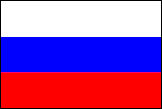
Nach dem Rücktritt Boris Nikolajewitsch Jelzins (Борис Николаевич Ельцин, 1931 - ) wird Wladimir Wladimirowitsch Putin (Владимир Владимирович Путин, 1952 - ) Interimspräsident Russlands. Im März 2000 sollen vorgezogene Präsidentenwahlen stattfinden.
Abb.: Russland
[Bildquelle: CIA. -- Public domain]
Abb.: Wladimir Wladimirowitsch Putin (Владимир Владимирович Путин) bei seiner Inauguration durch den orthodoxen Patriarchen von Moskau, 2000-05-07
[Bildquelle: Фото пресс-службы Президента России. -- http://archive.kremlin.ru/events/photos/2000/05/128981.shtml. -- Zugriff am 2011-12-19]
Abb.: Wladimir Wladimirowitsch Putin (Владимир Владимирович Путин) / von Murray Webb (1947 - ), 2007
[Bildquelle: Vladimir Putin. 13 February, 2007.. Webb, Murray, 1947- :[Digital caricatures published from 29 July 2005 onwards (2006, 2007, 2008). Includes a selection of digital caricatures published from 2002 and up to July 2005.]. Ref: DCDL-0002942. Alexander Turnbull Library, Wellington, New Zealand. http://natlib.govt.nz/records/22545254. -- Zugriff am 2013-03-09. -- "You can copy this item for personal use, share it, and post it on a blog or website. It cannot be used commercially without permission"]
1999-12-31
2000 Paare warten in Nonthaburi (นนทบุรี) darauf, zu Beginn des zweiten Jahrtausends zu heiraten.
Abb.: Lage von Nonthaburi (นนทบุรี)
[Bildquelle: OpenStreetMap. -- Creative Commons Lizenz (Namensnennung, share alike)]
ausführlich: http://www.payer.de/thailandchronik/ressourcen.htm
Zu Chronik 2000 / B. E. 2543. -- 1. undatiert